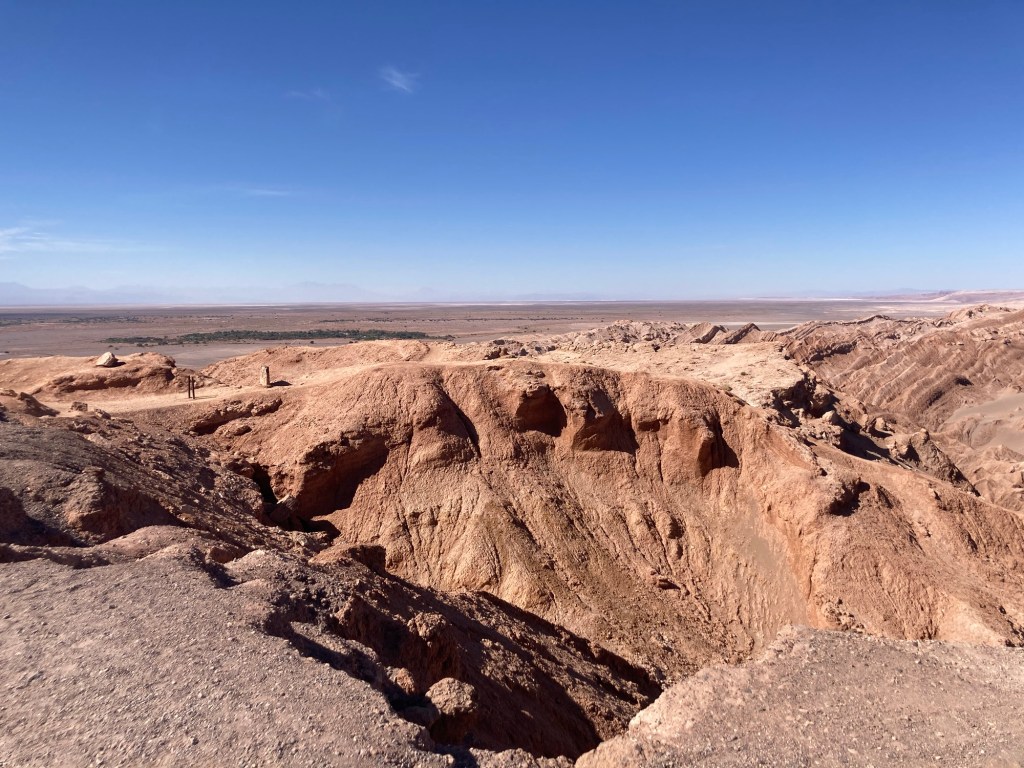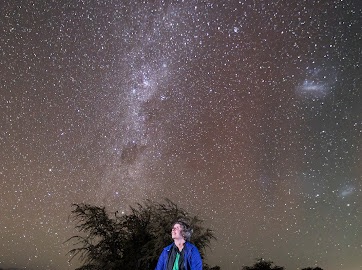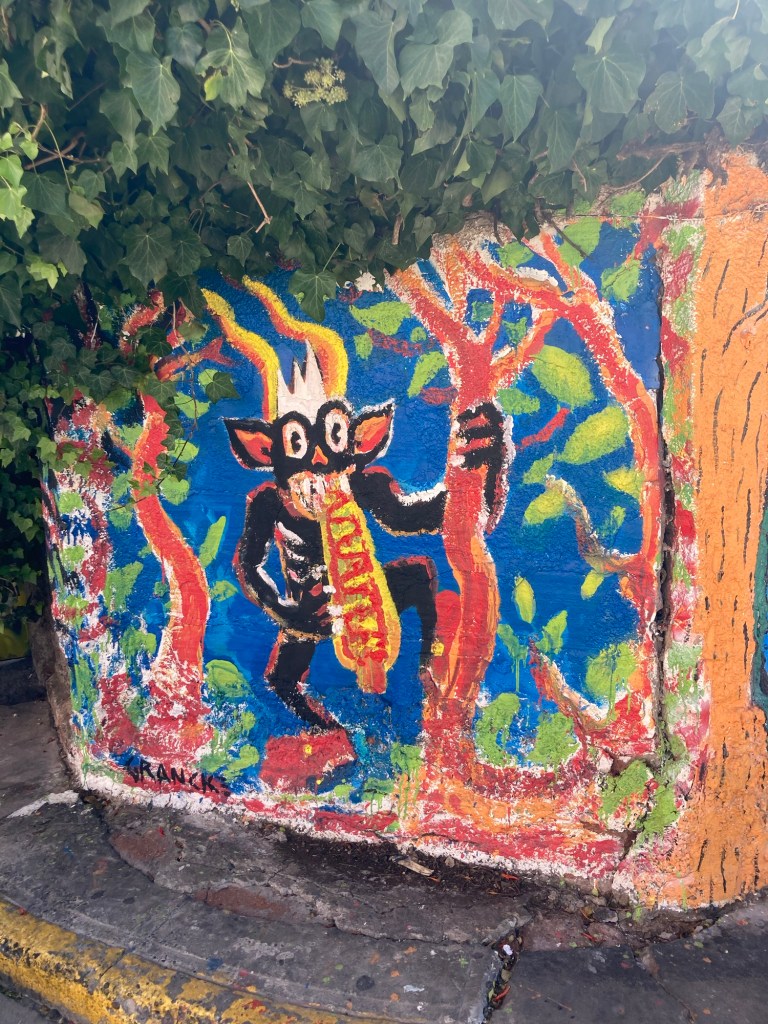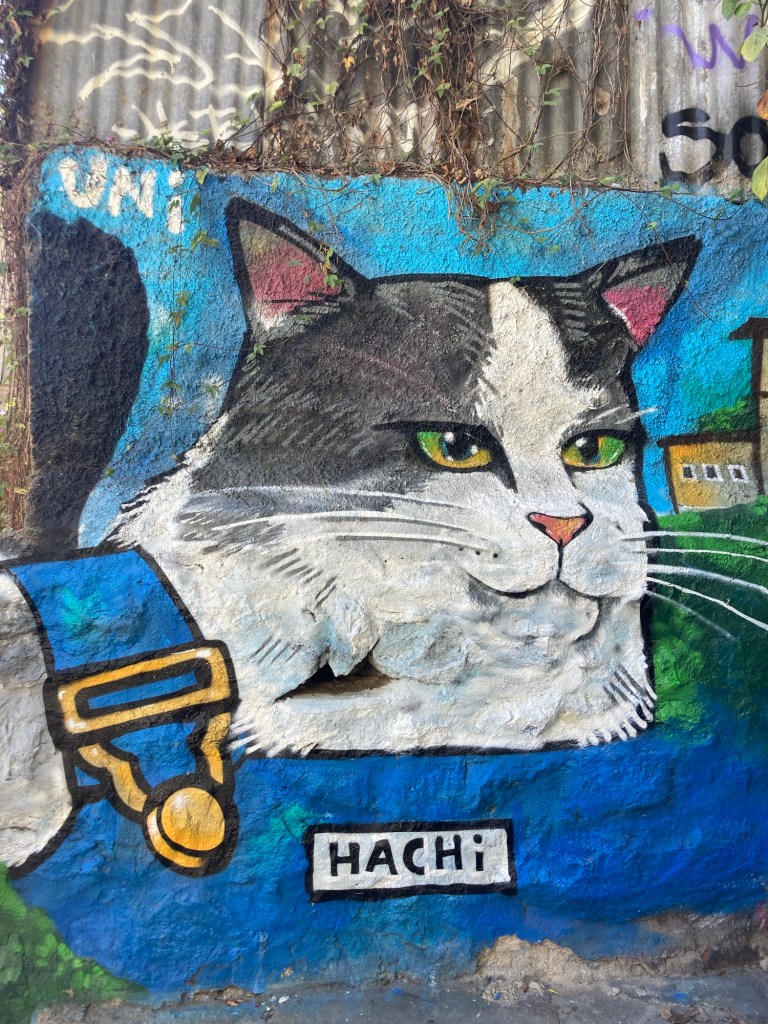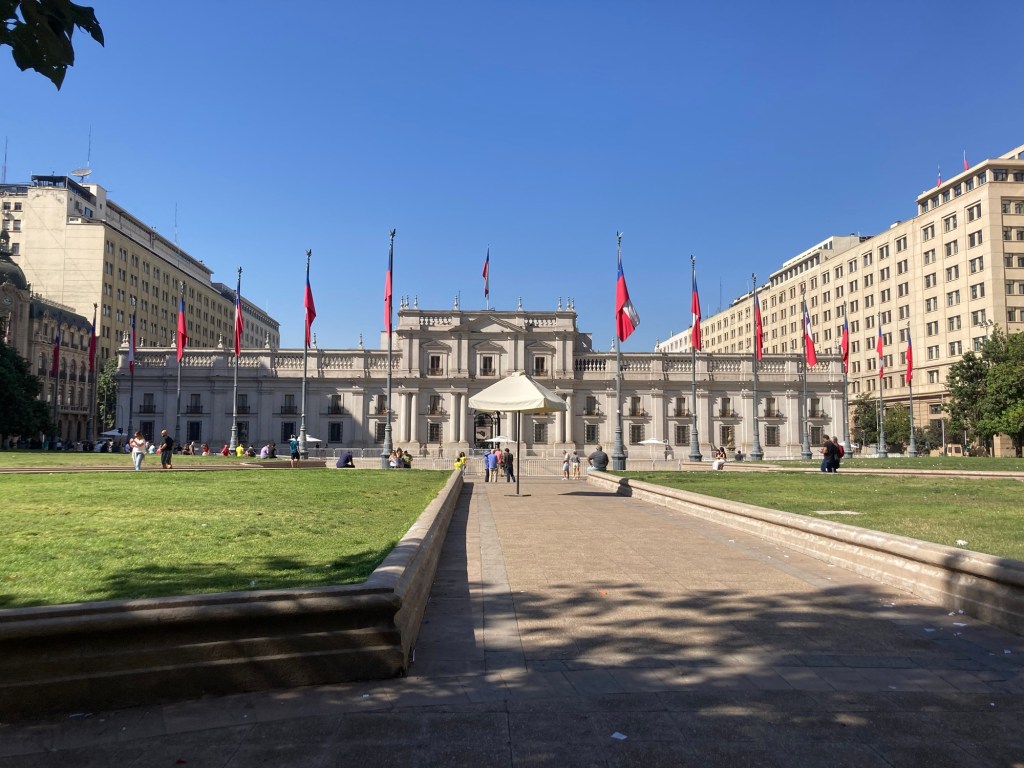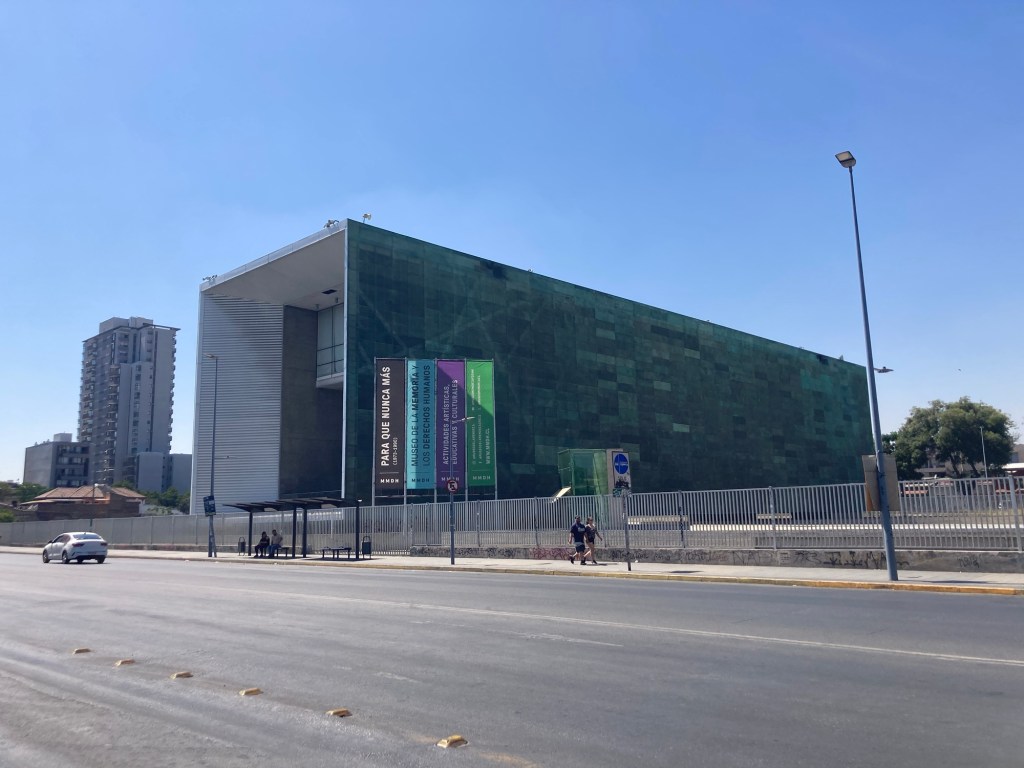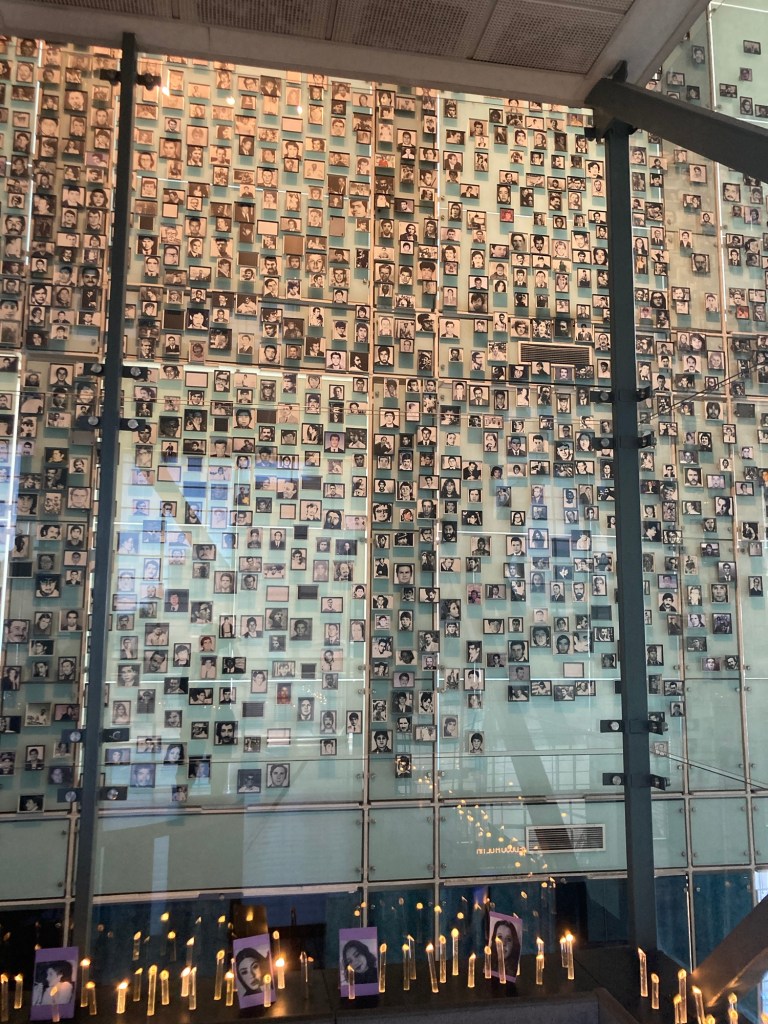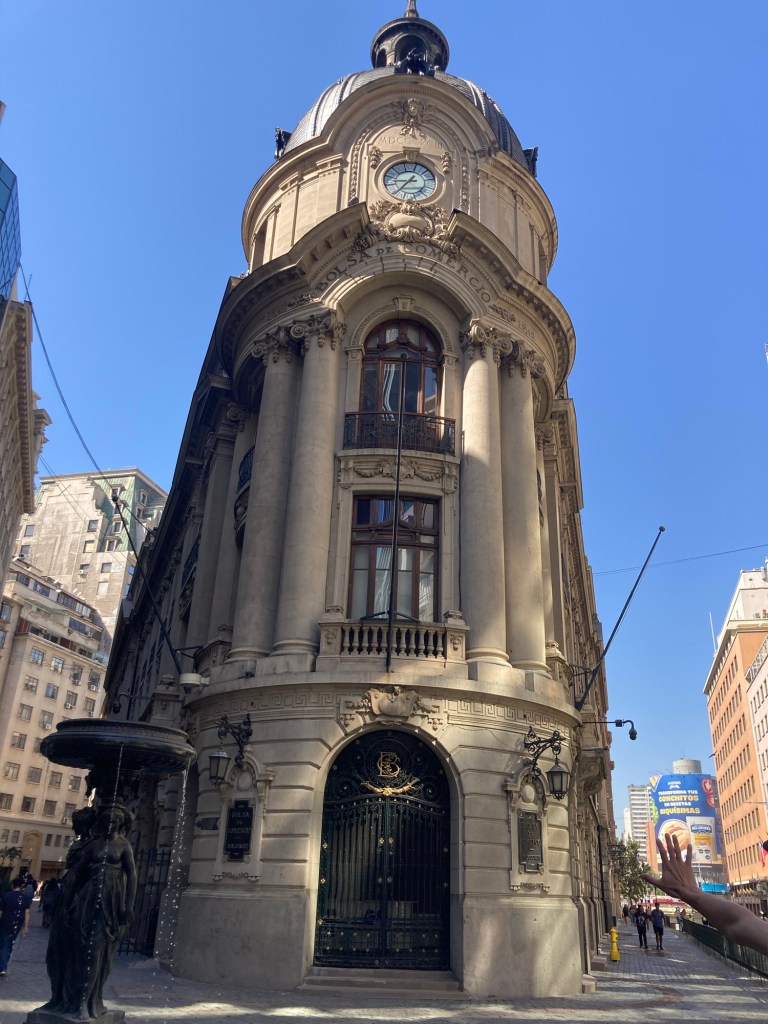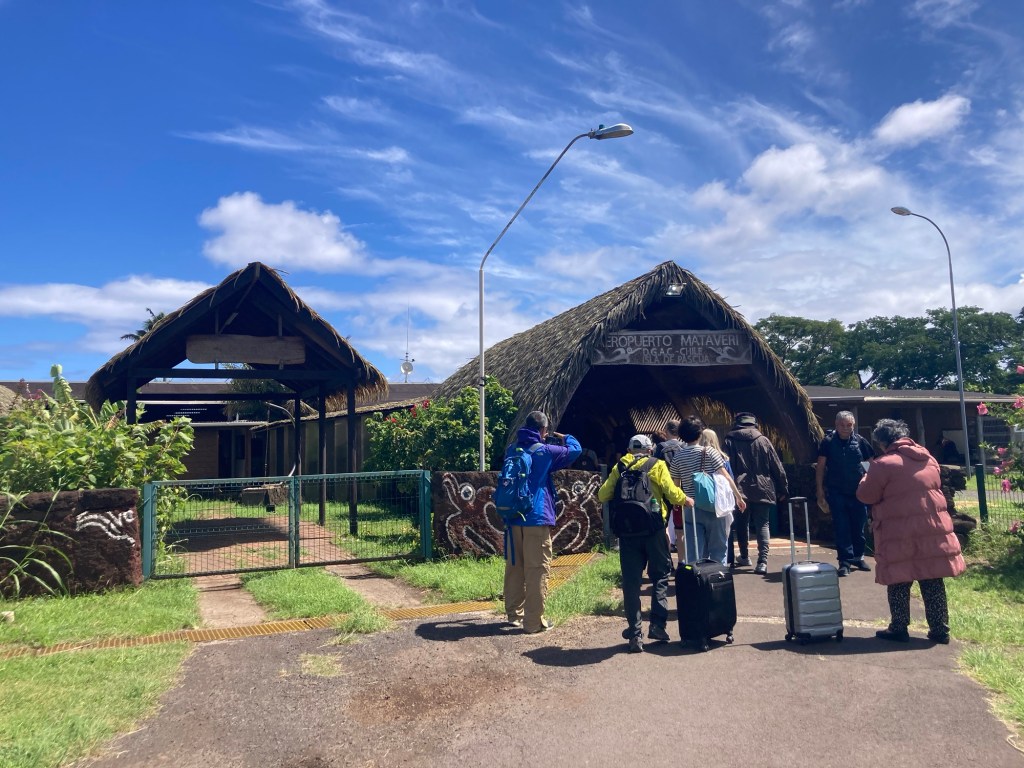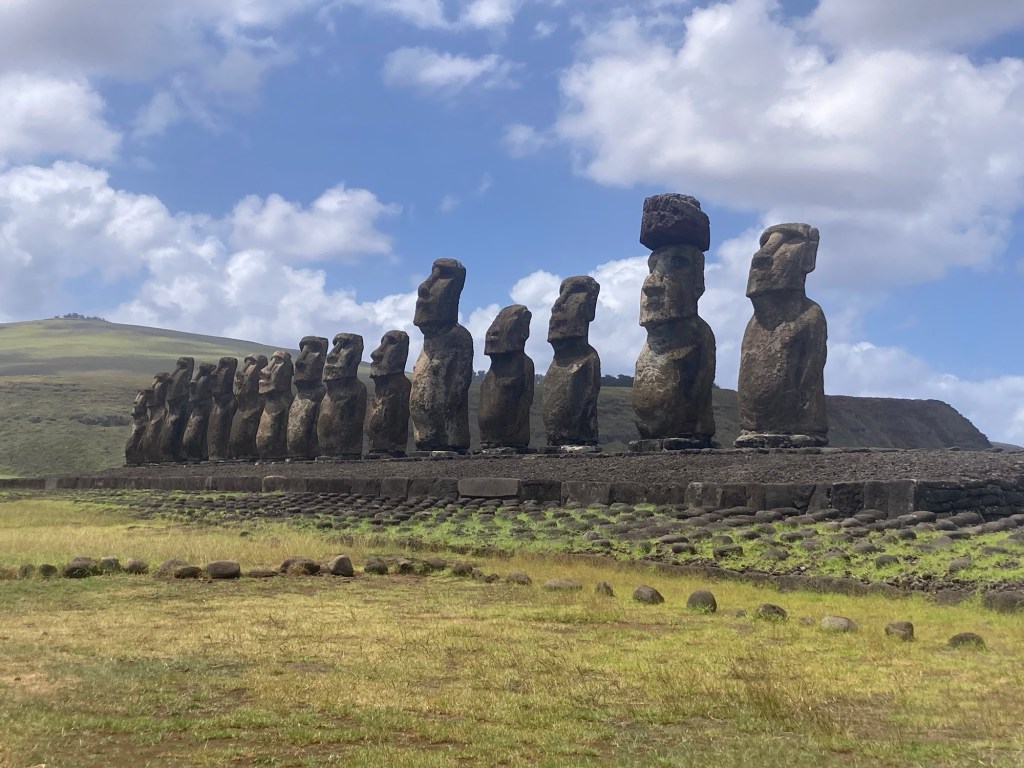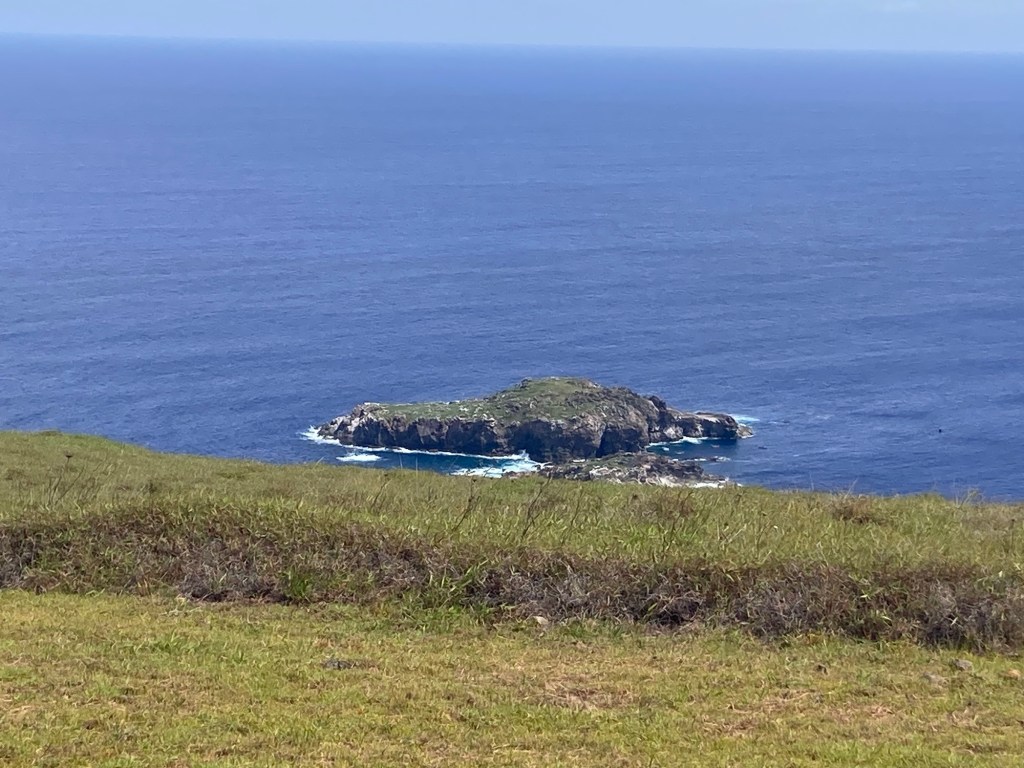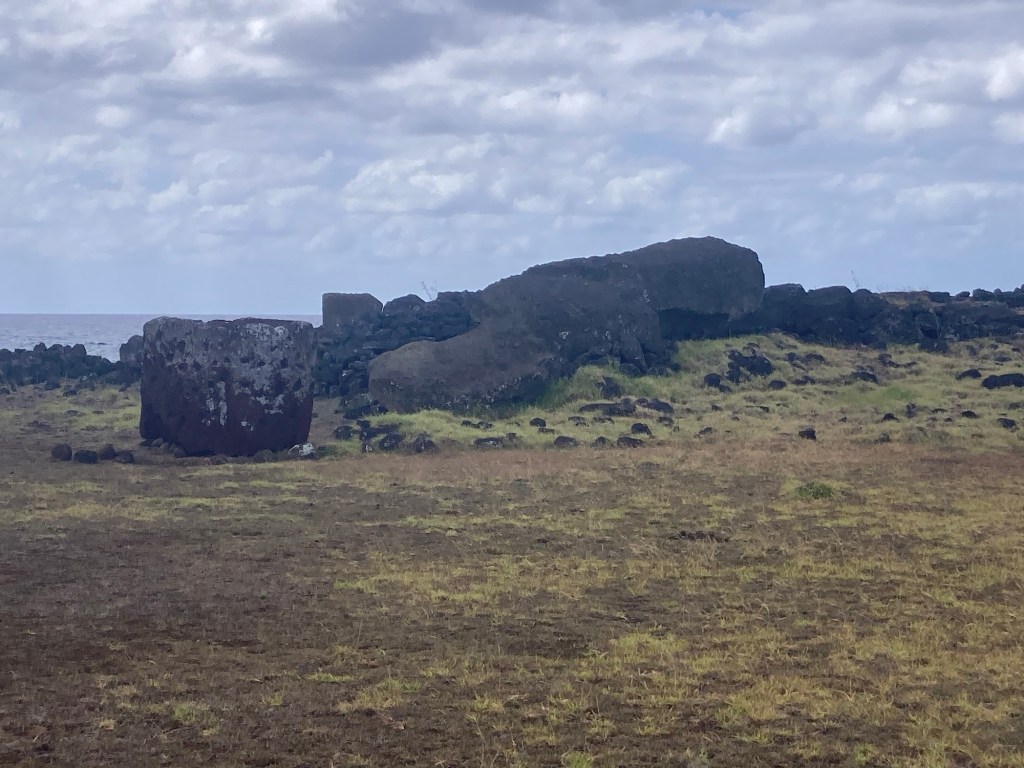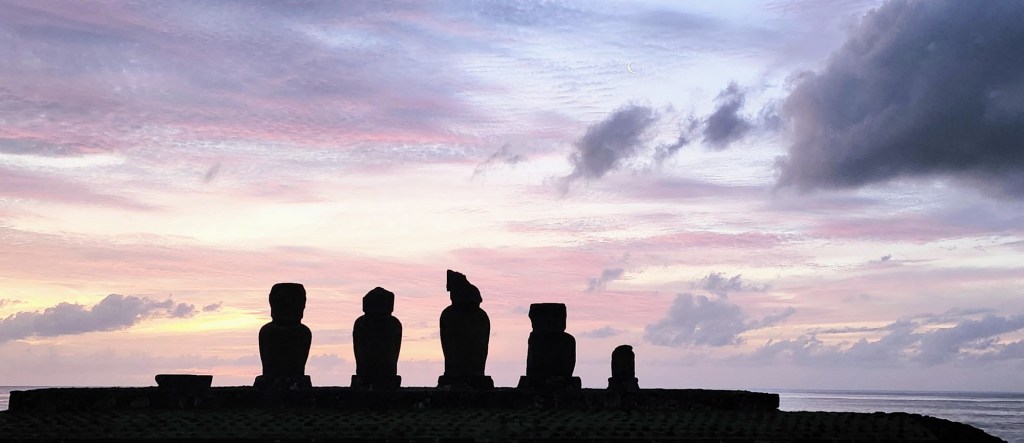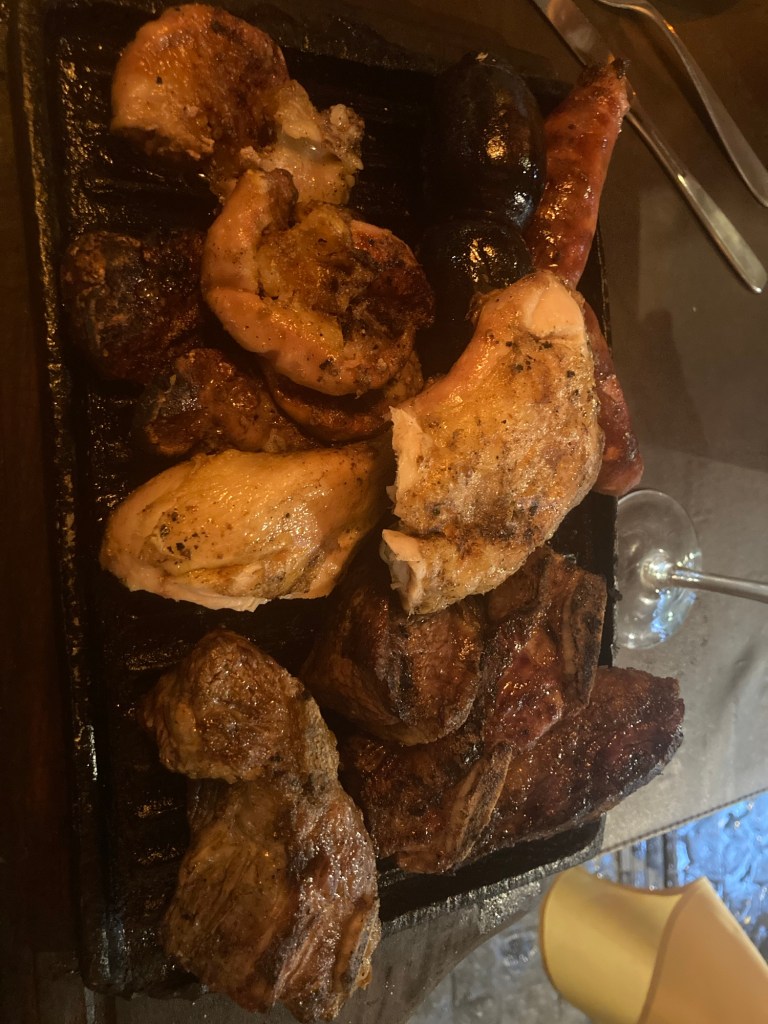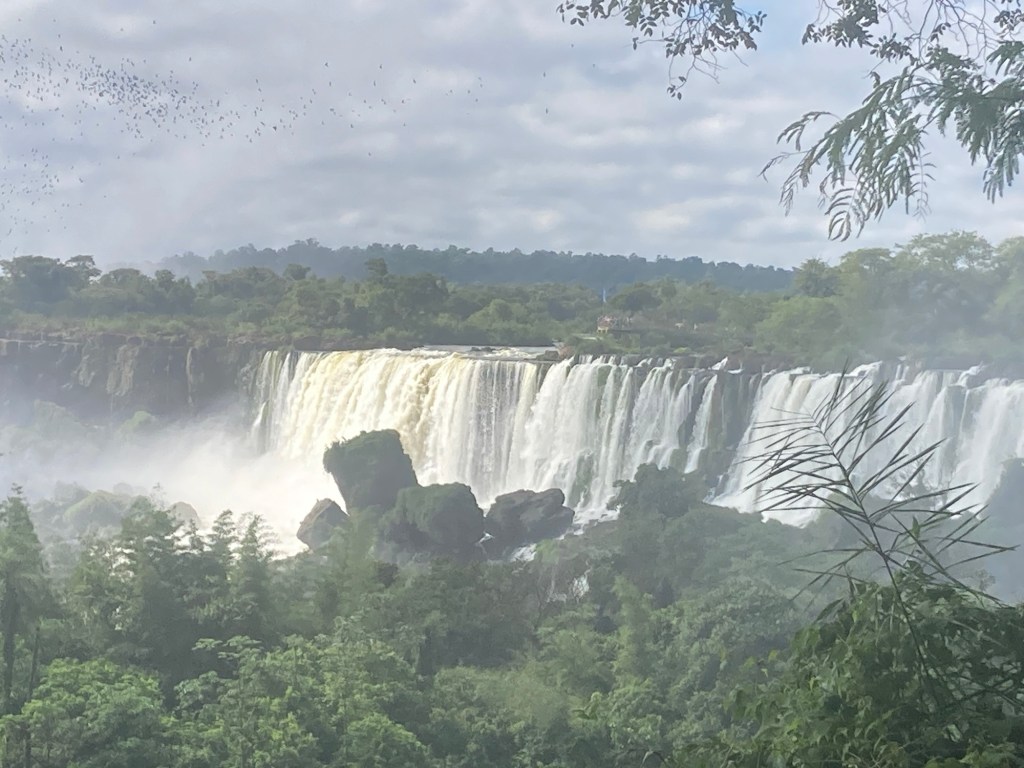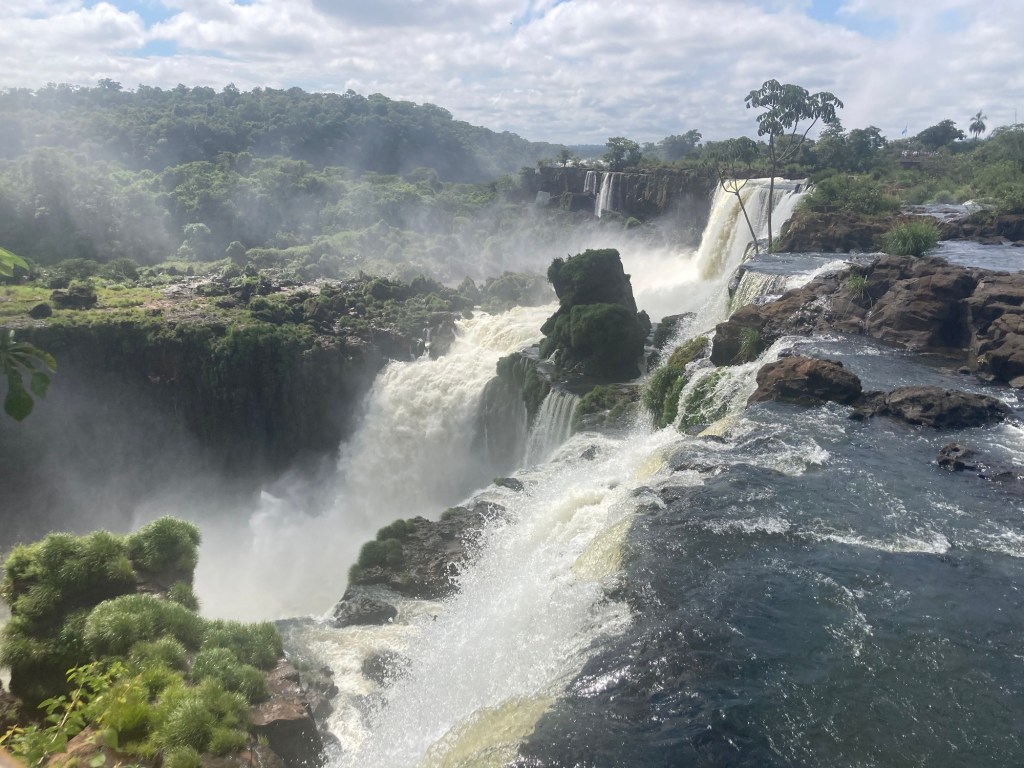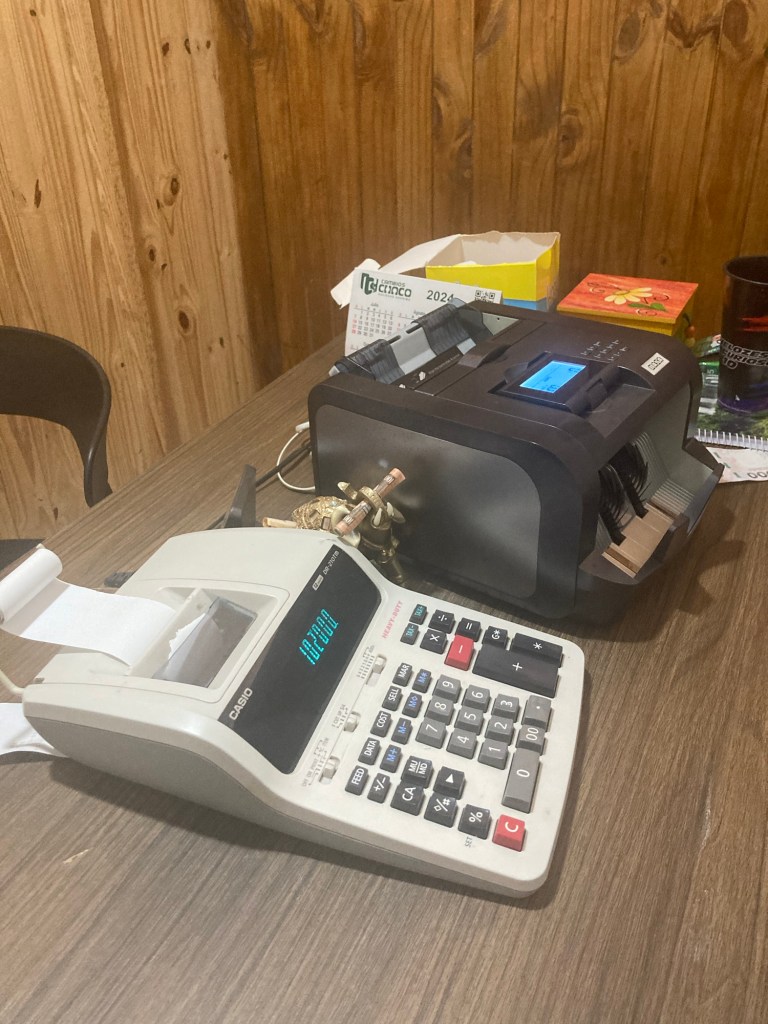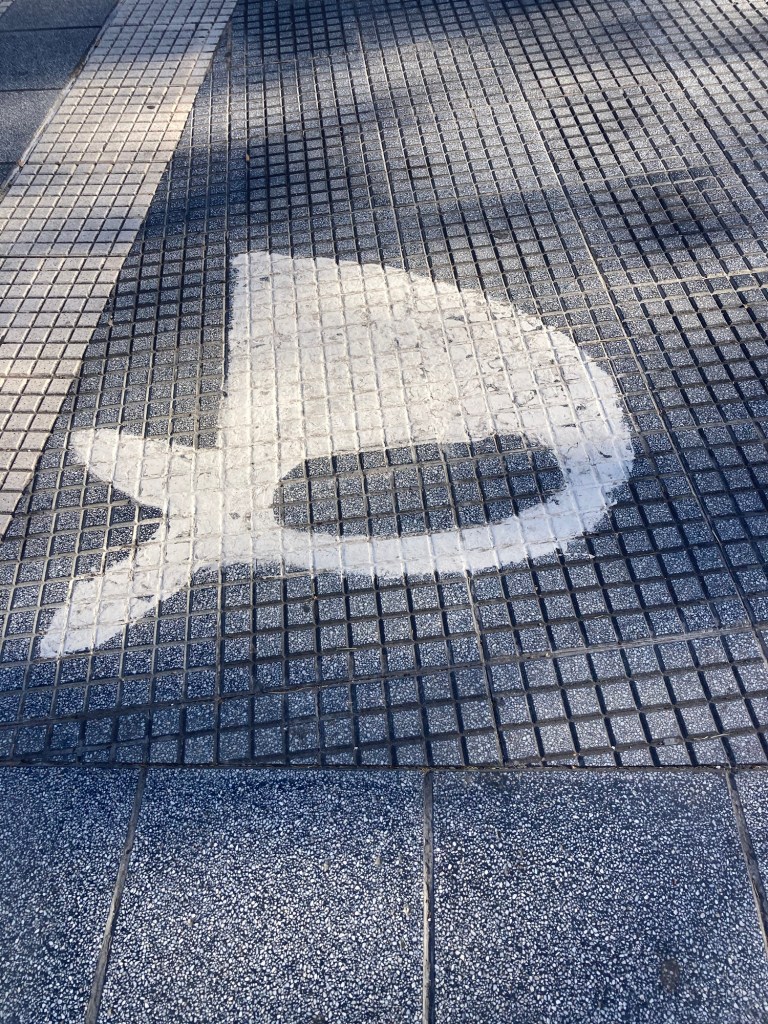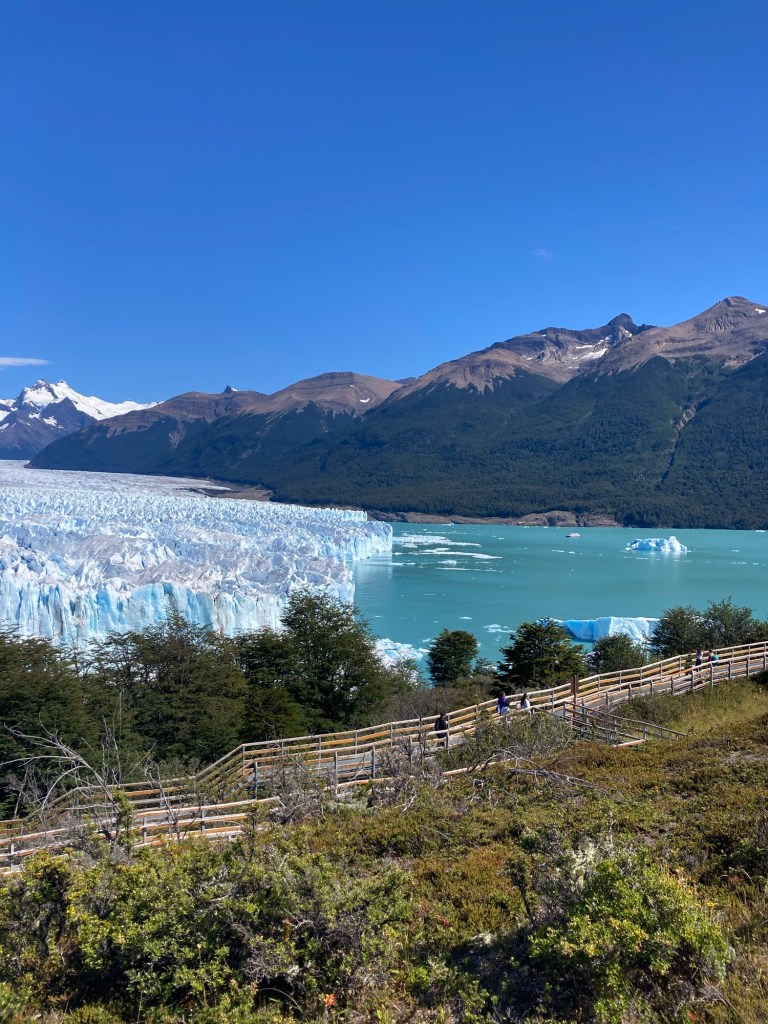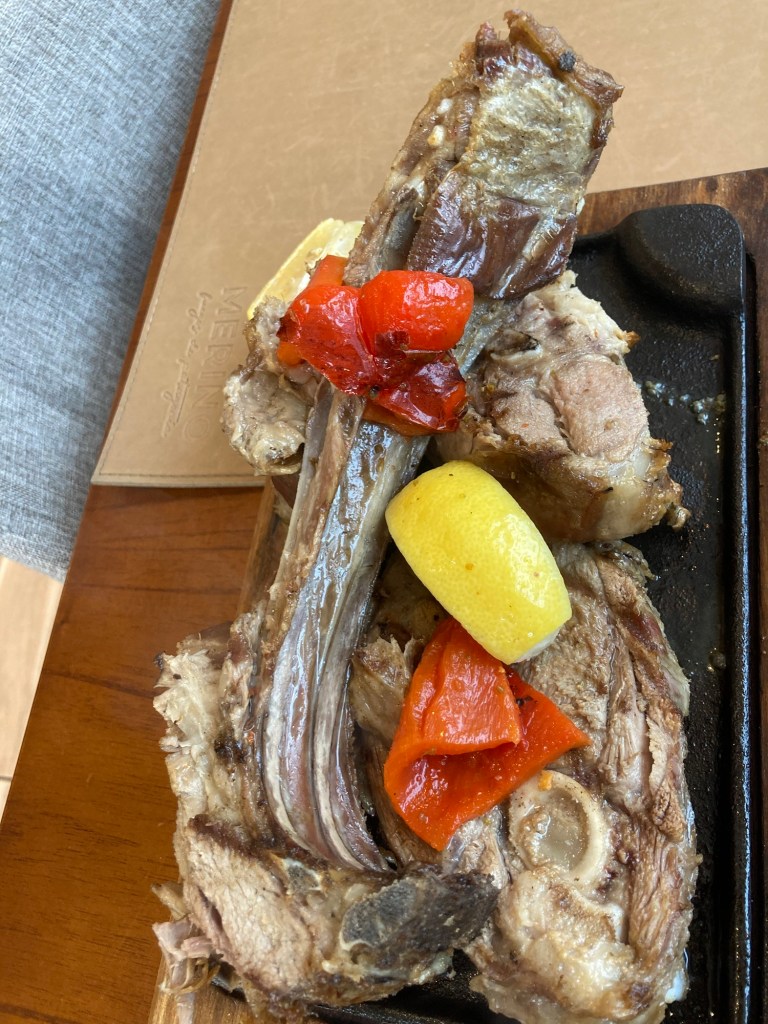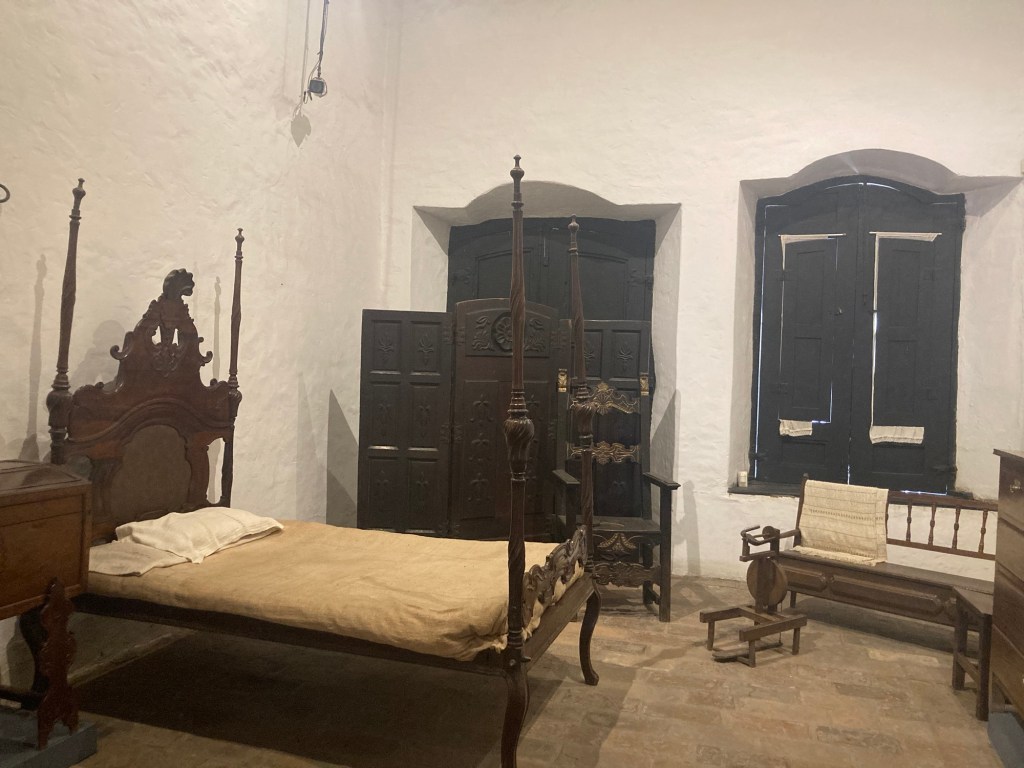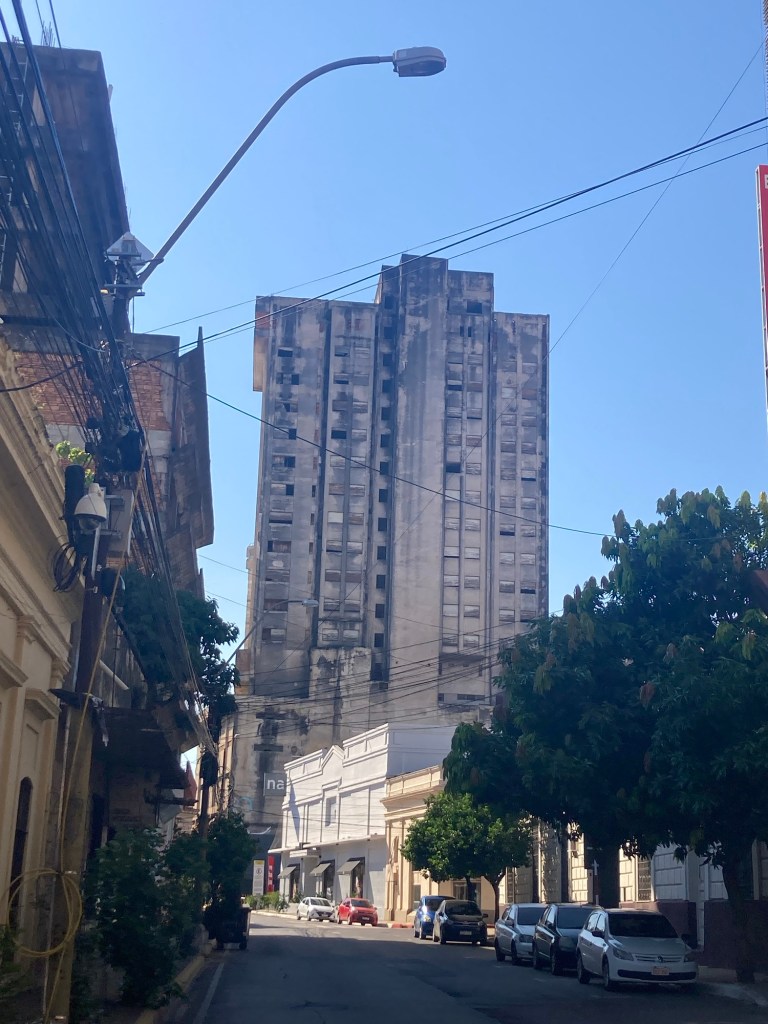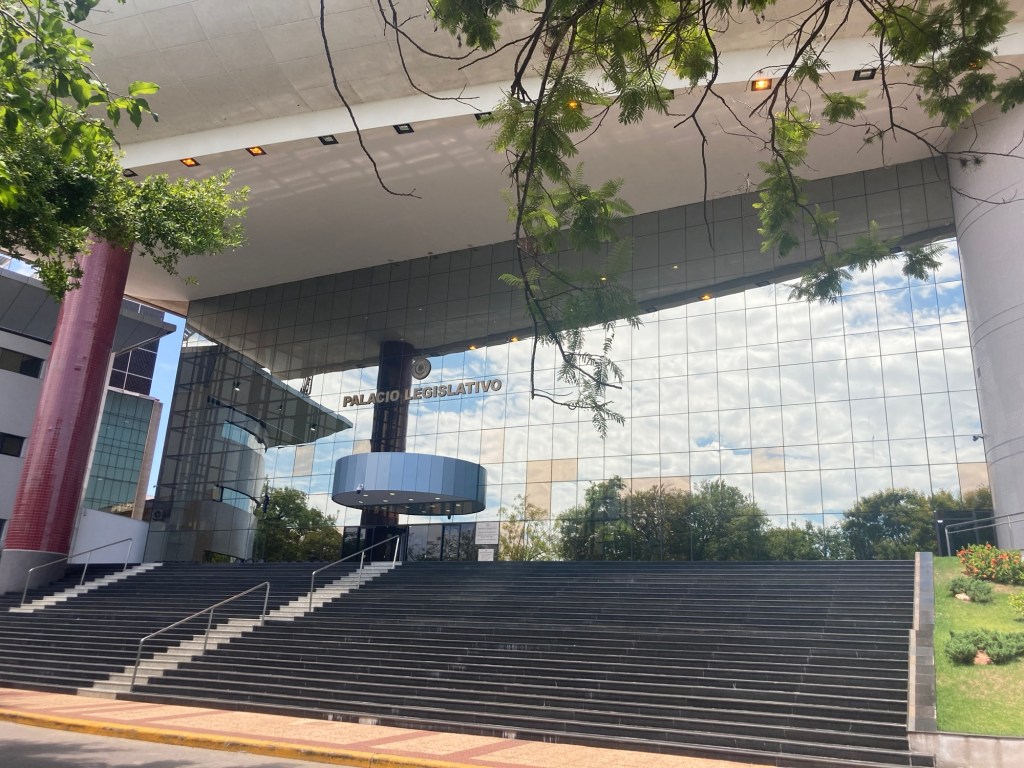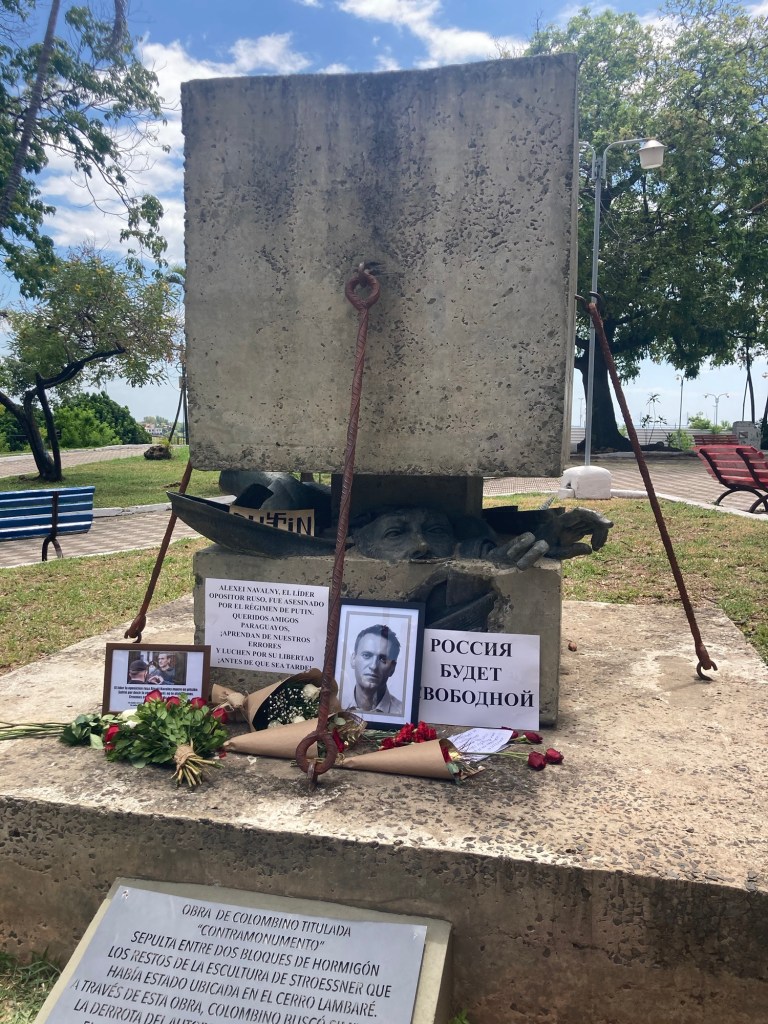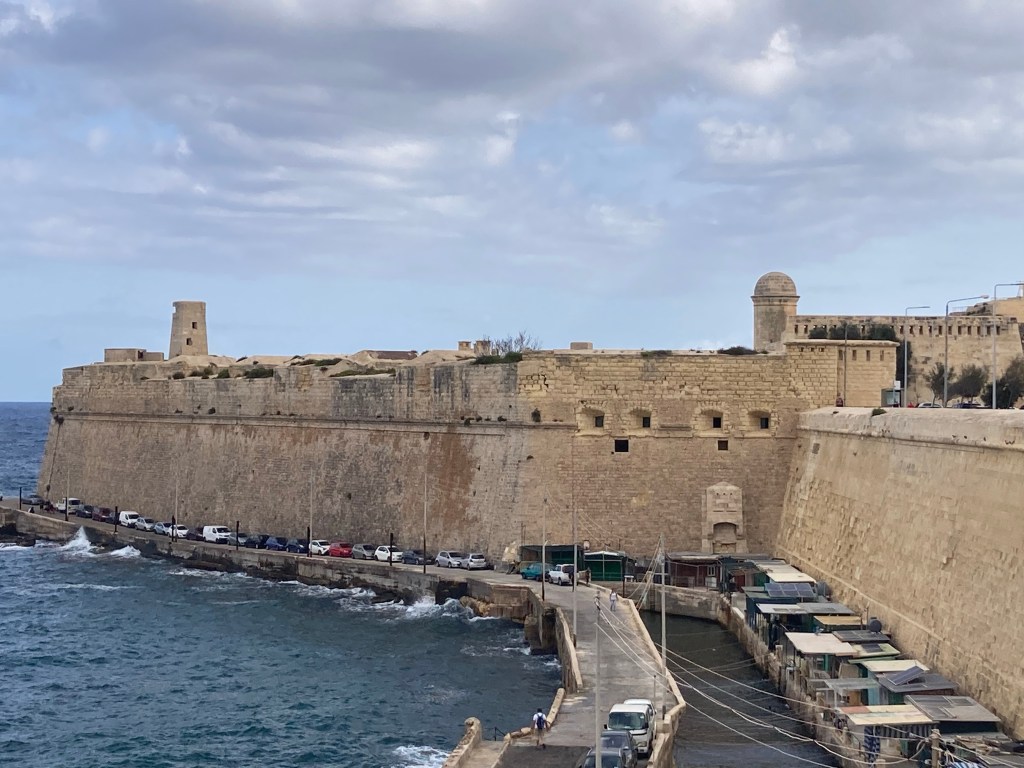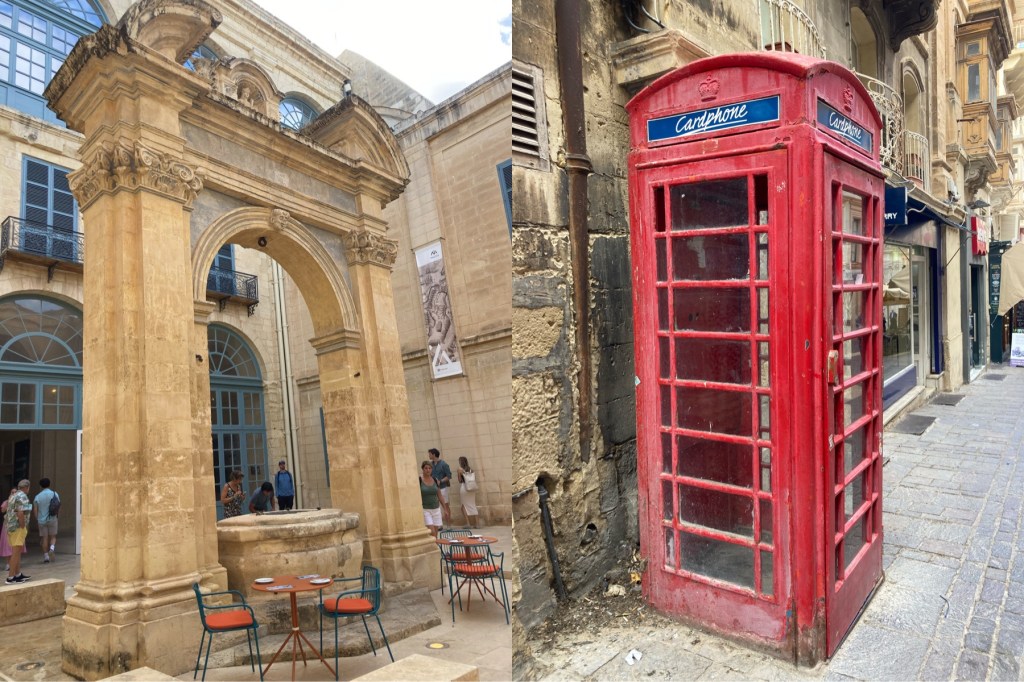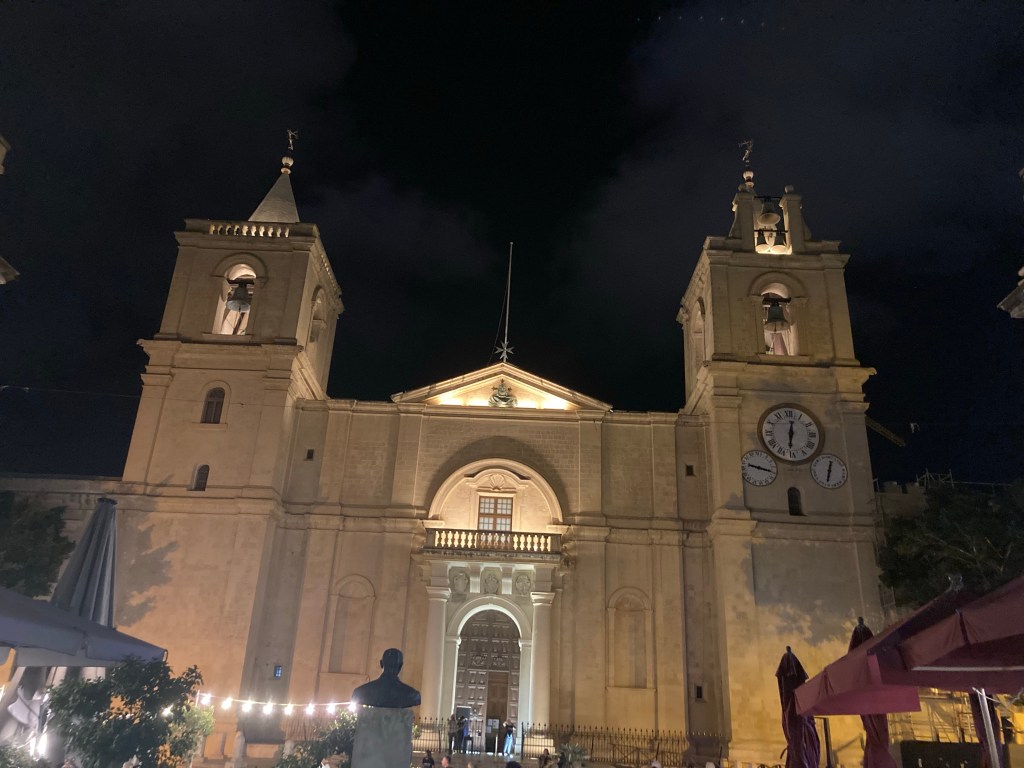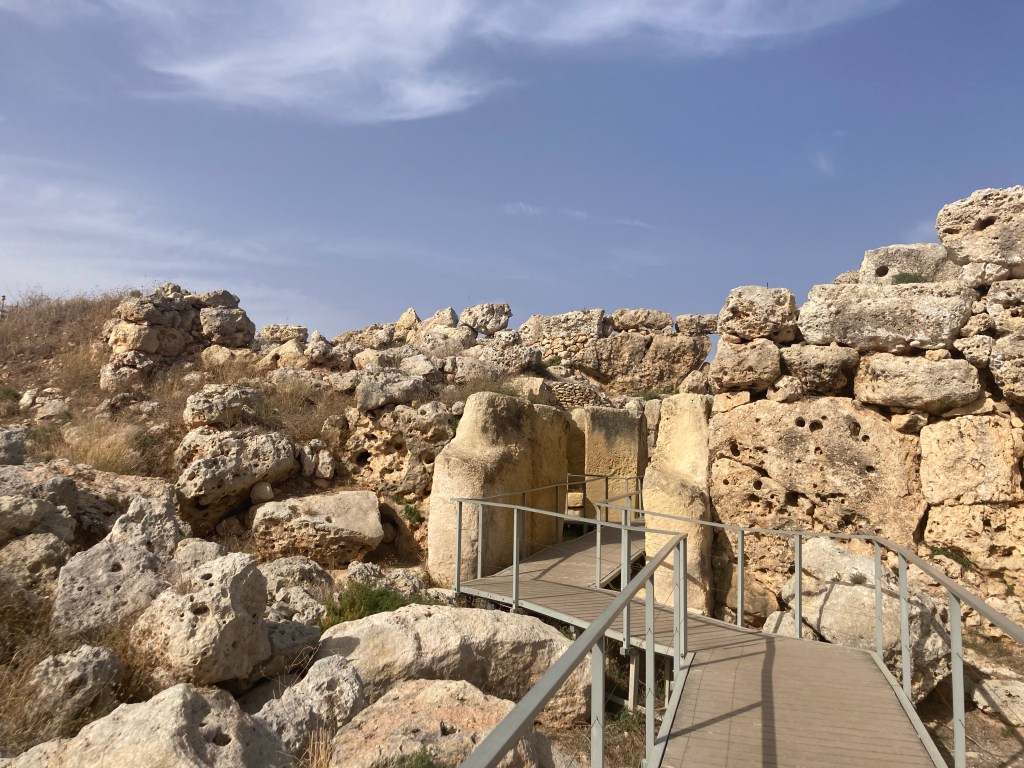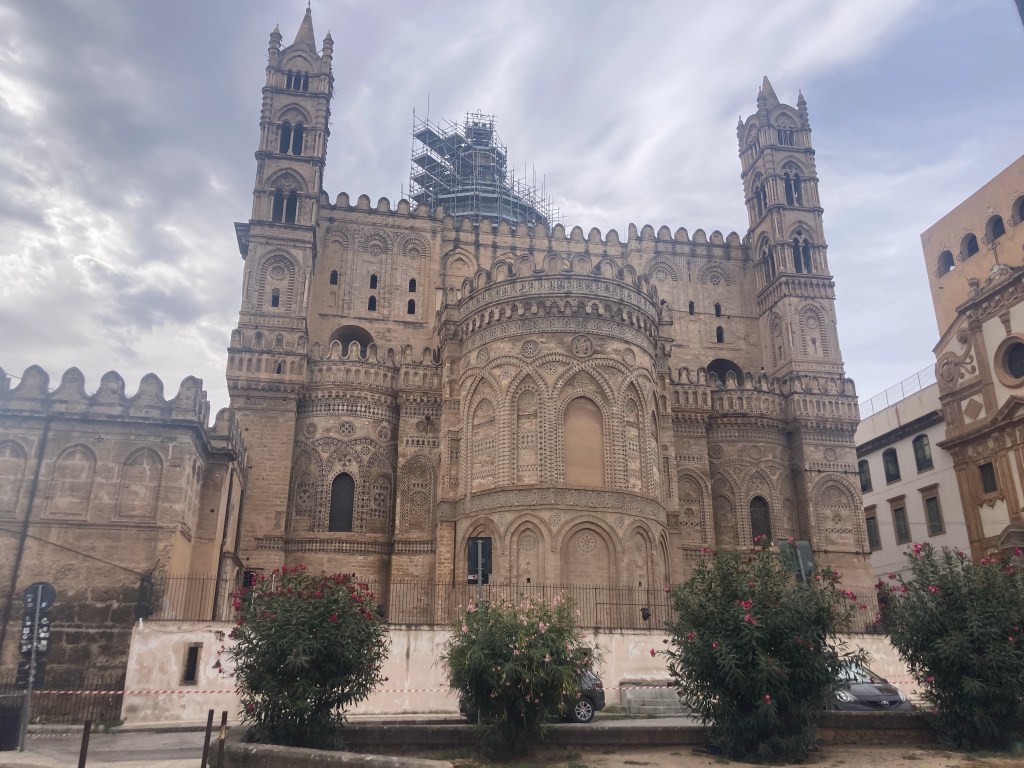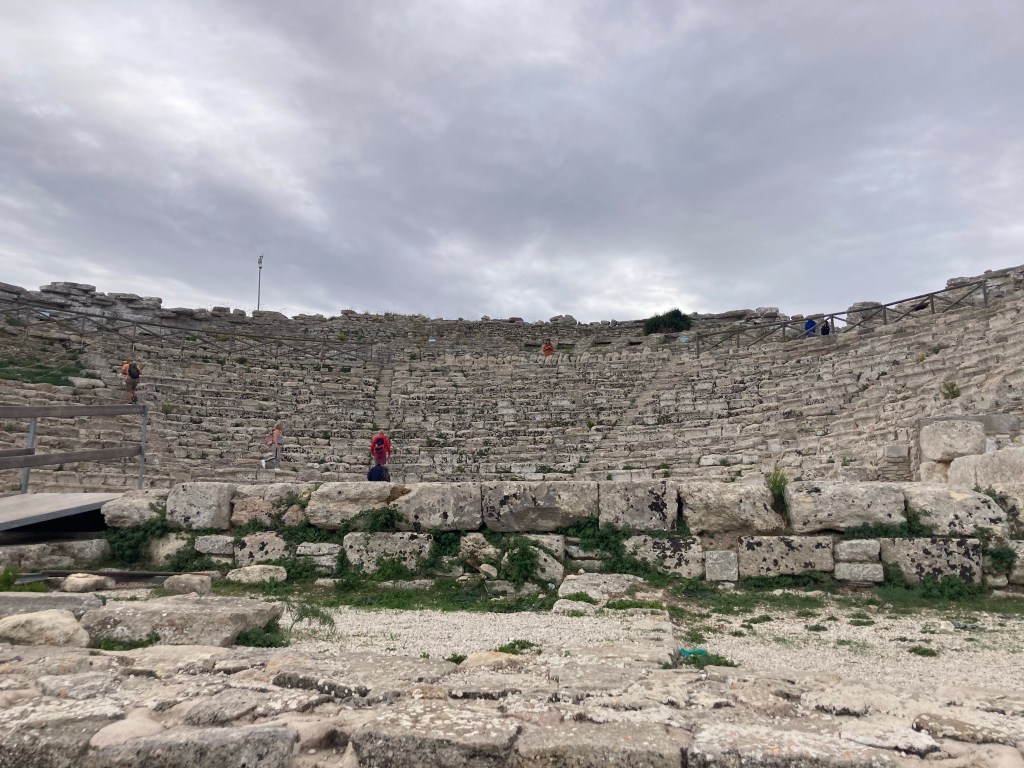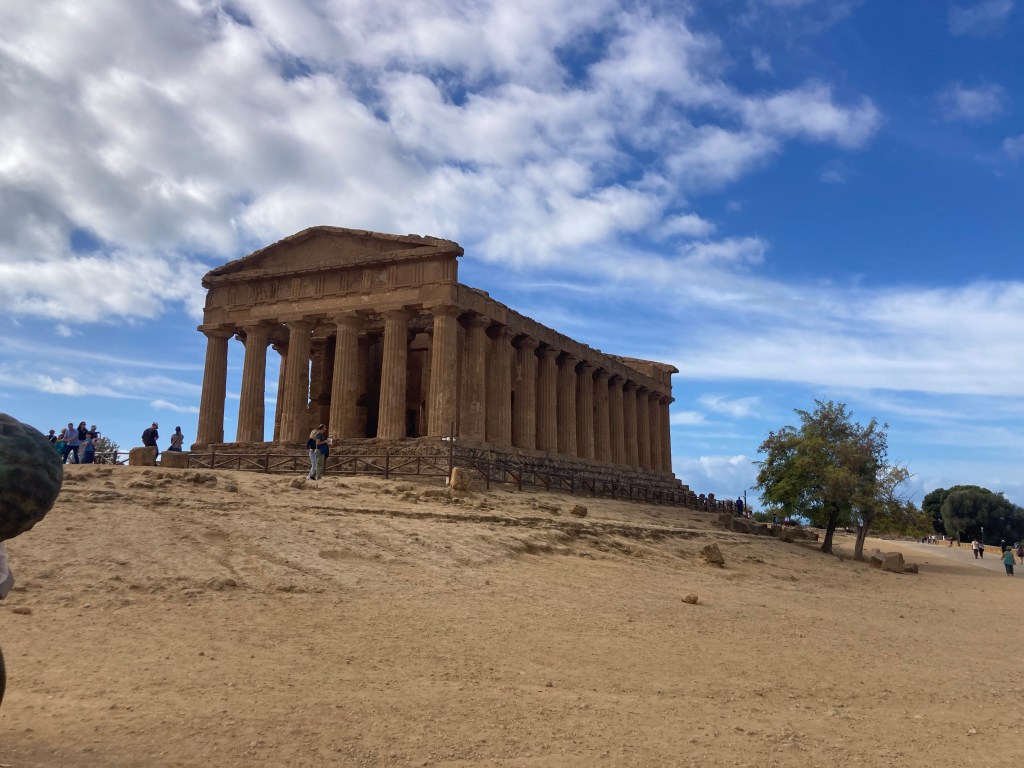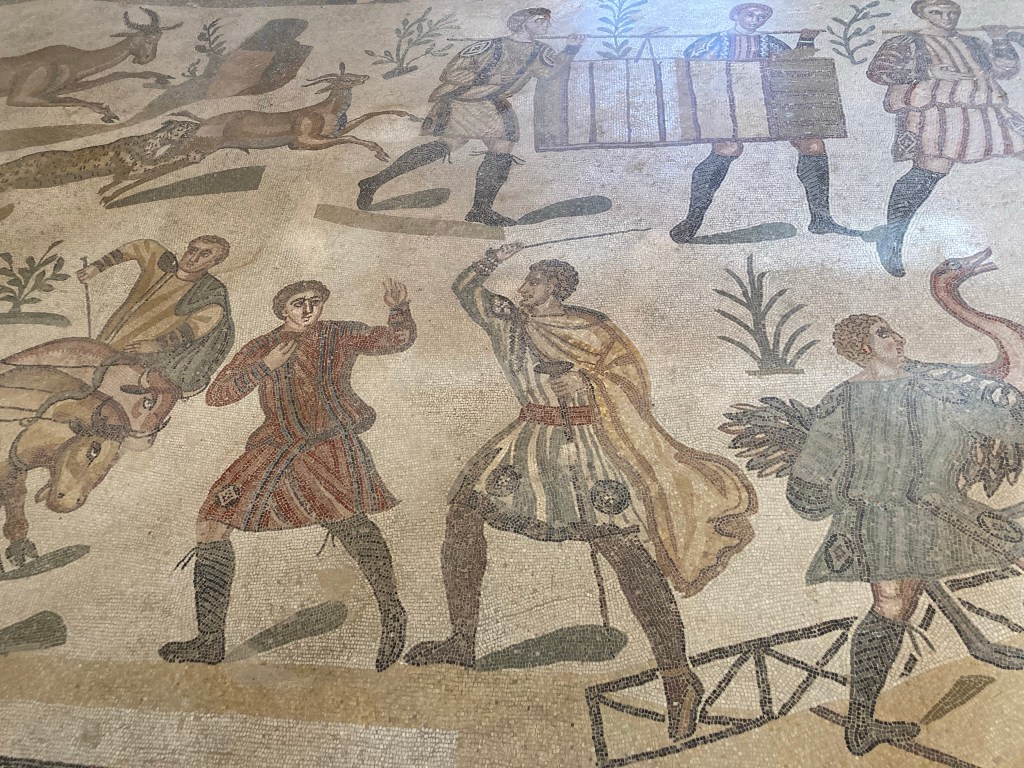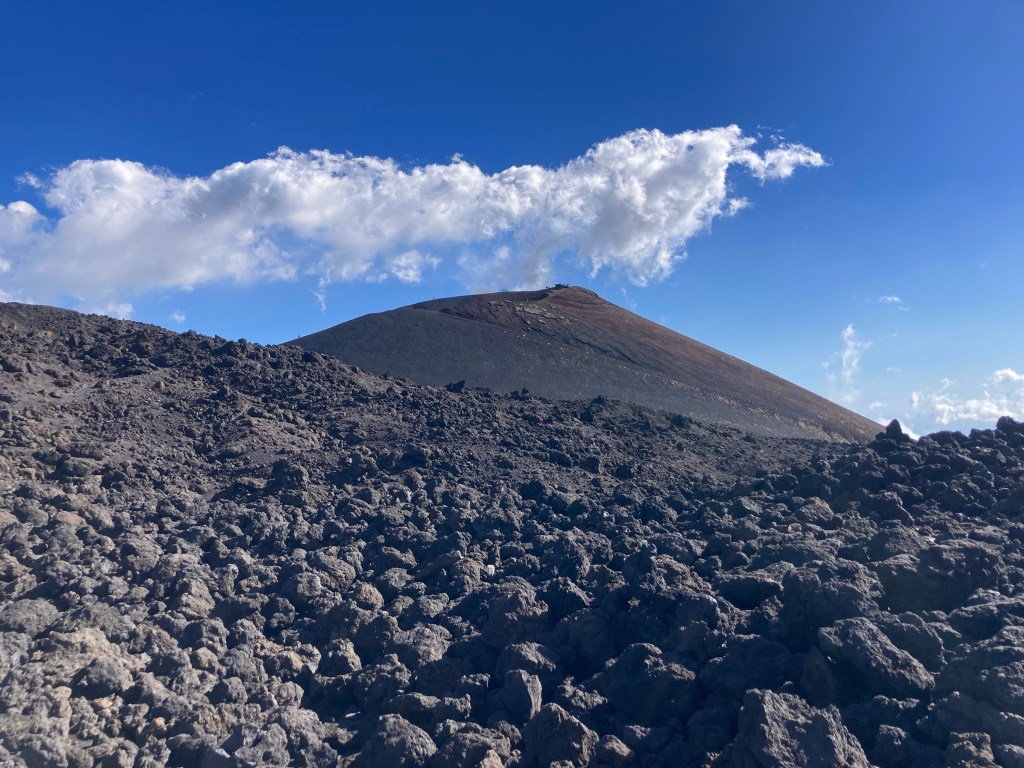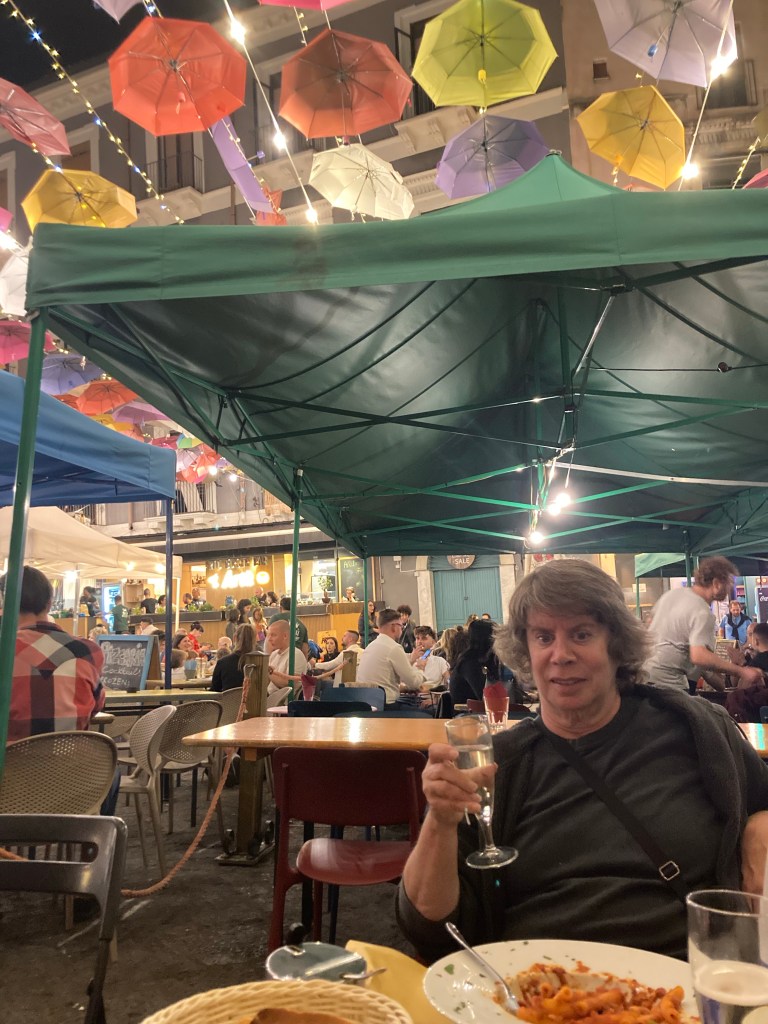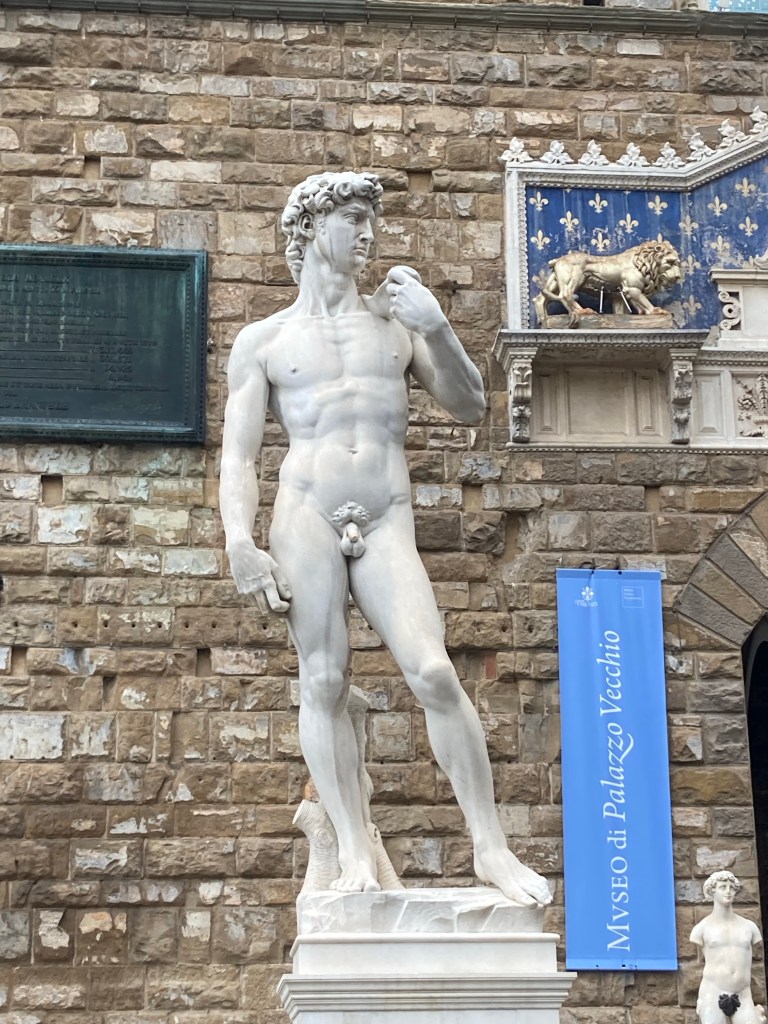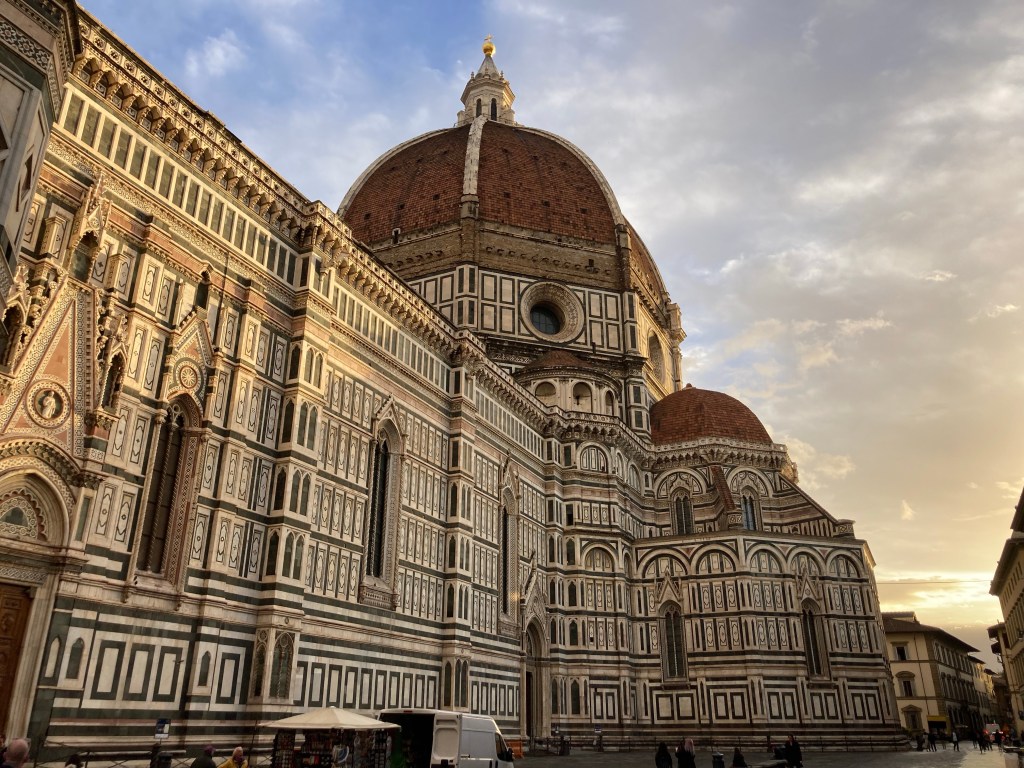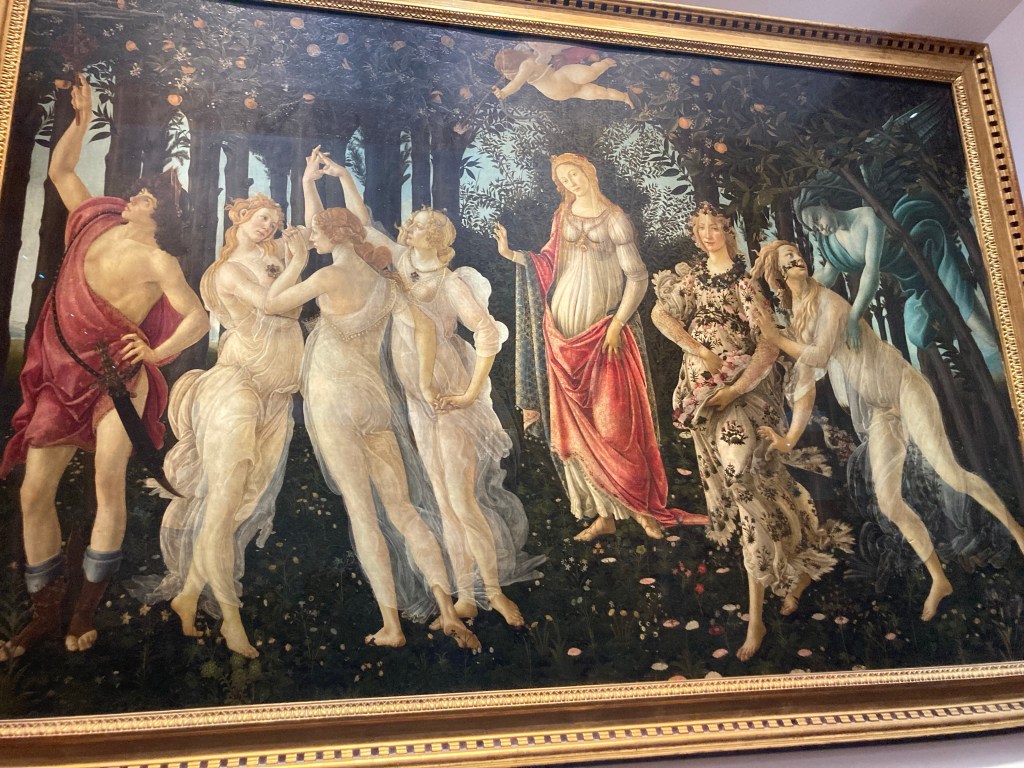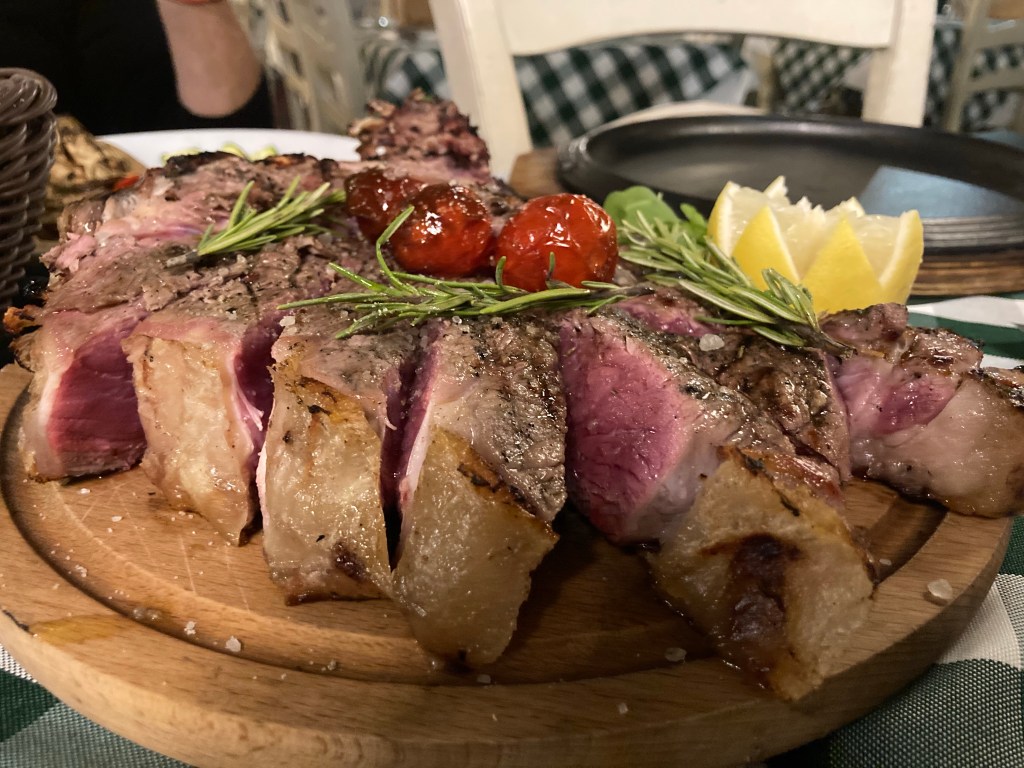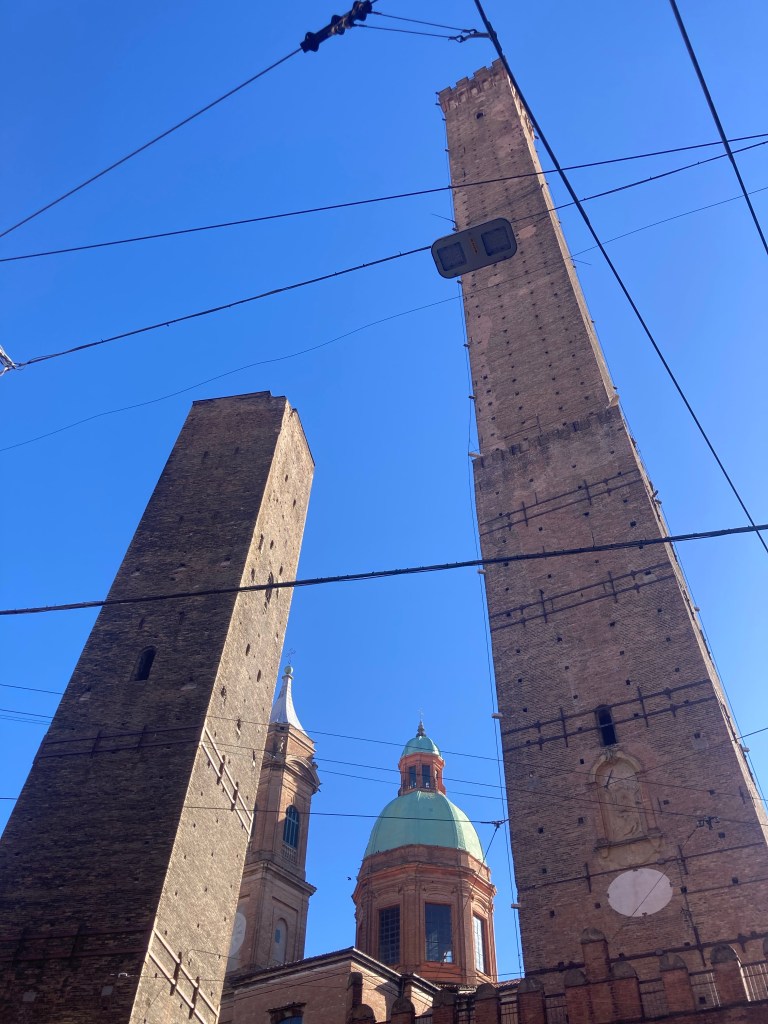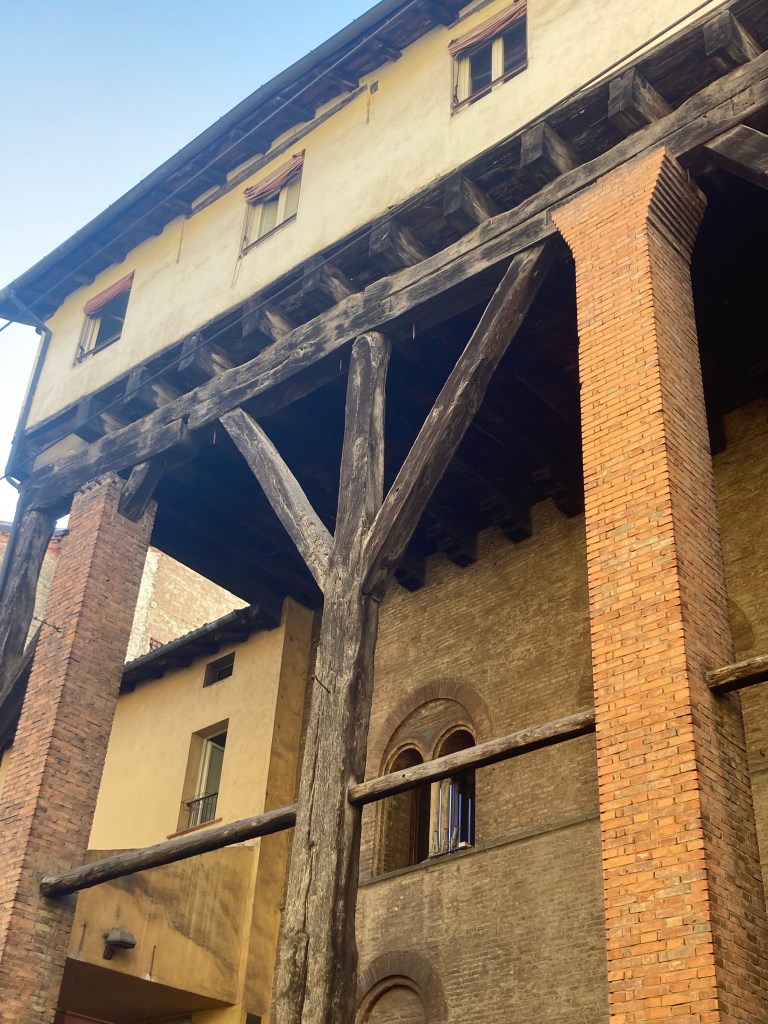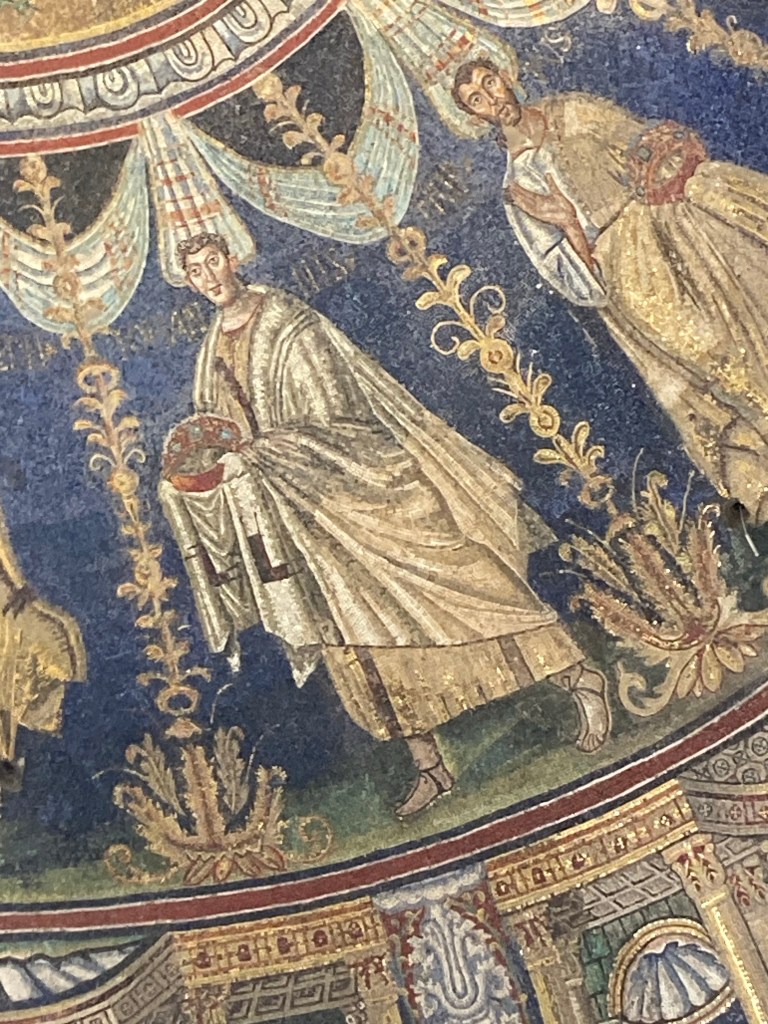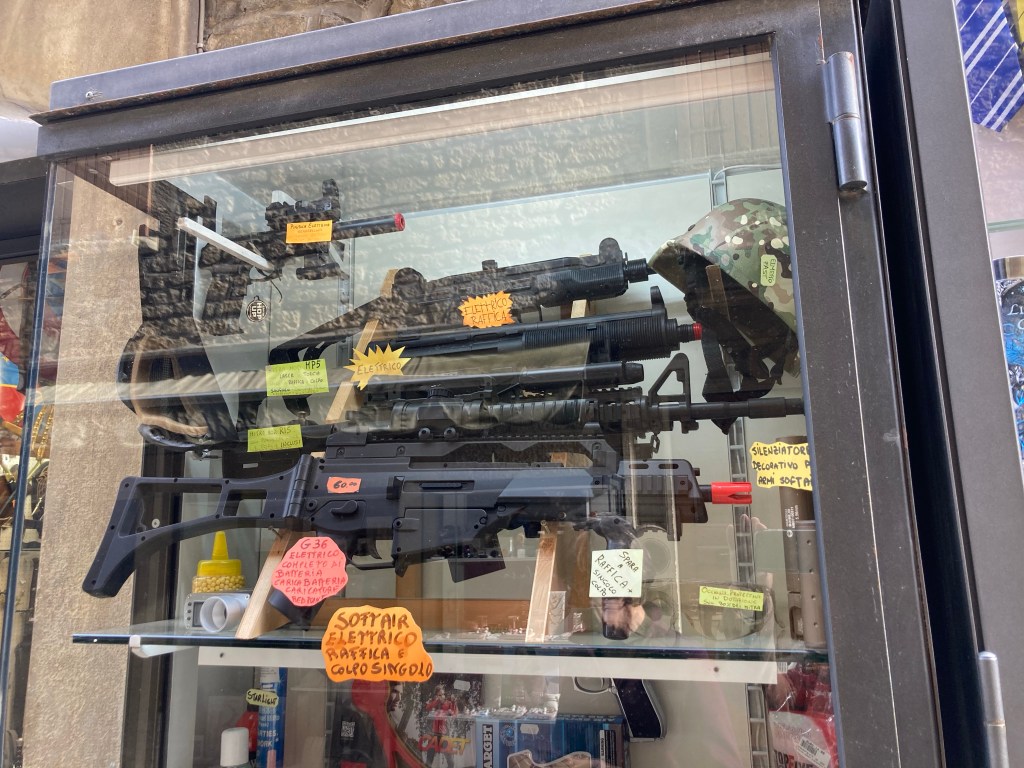My entry to Bolivia was not smooth. After a 30 minute drive from San Pedro de Atacama in Chile, the paved road abruptly turned into a sandy red path leading to a small outpost high atop the Bolivian plateau. Me and the other 7 tourists travelling with me were unceremoniously dumped outside a building with a single open window, at the end of a long line snaking towards the only immigration officer doing anything. It was cold and windy, but no one from the Bolivian office seemed to care and whenever an American, needing to pay for a Bolivian visa, got to the window, it closed for 15 minutes. A long two hours later, I finally received the necessary stamp in my passport and clamoured into the four wheel drive truck that would take me all the way to the Uyuni salt flats two days hence.
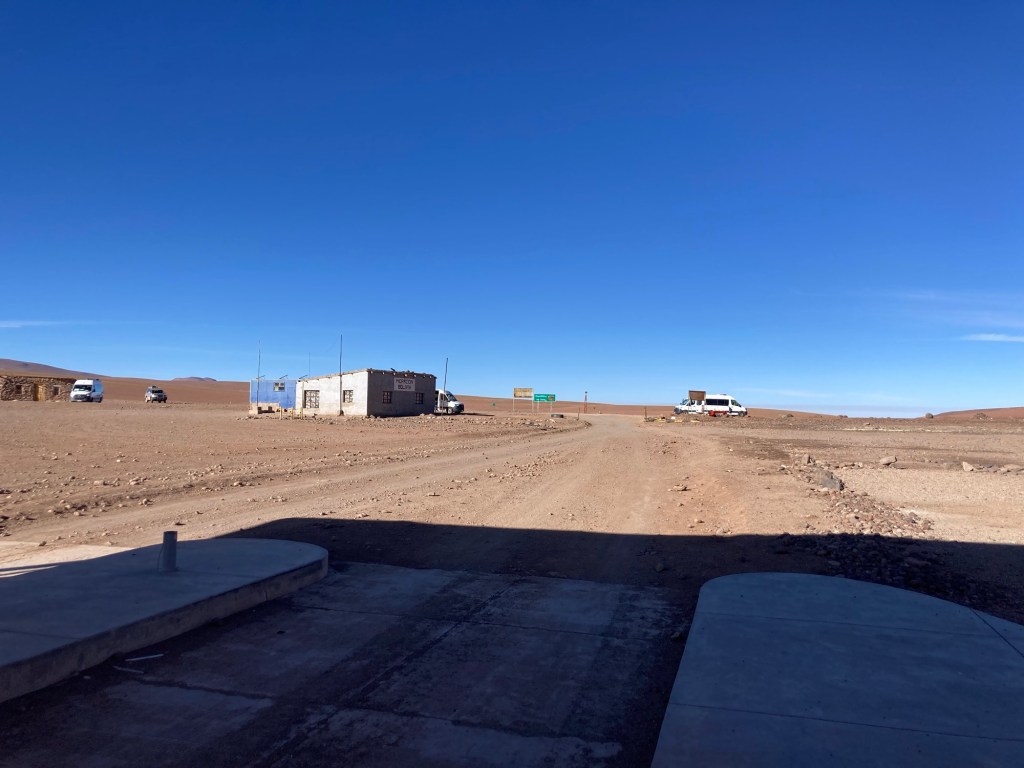
On we drove for at least 5 minutes before stopping at the Bolivian customs office where we all had to scan a QR code and fill out info about what we were bringing into Bolivia. Apparently cocoa leaves were fine but cash over $10,000 was not. We all passed, returned to our vehicle and drove another 5 minutes before stopping at the national park office and paying our national park fee. Now I’m sure you see where I’m going with this but why couldn’t the three bureaucratic agencies have shared a single building rather than requiring 3 separate stops? I don’t know but the whole mess took about 4 hours and was frustrating as heck.
Finally our tour started proper and our first stop was at the White Lake , created out of the volcanic craters of the Bolivian altiplano, the second highest on earth:
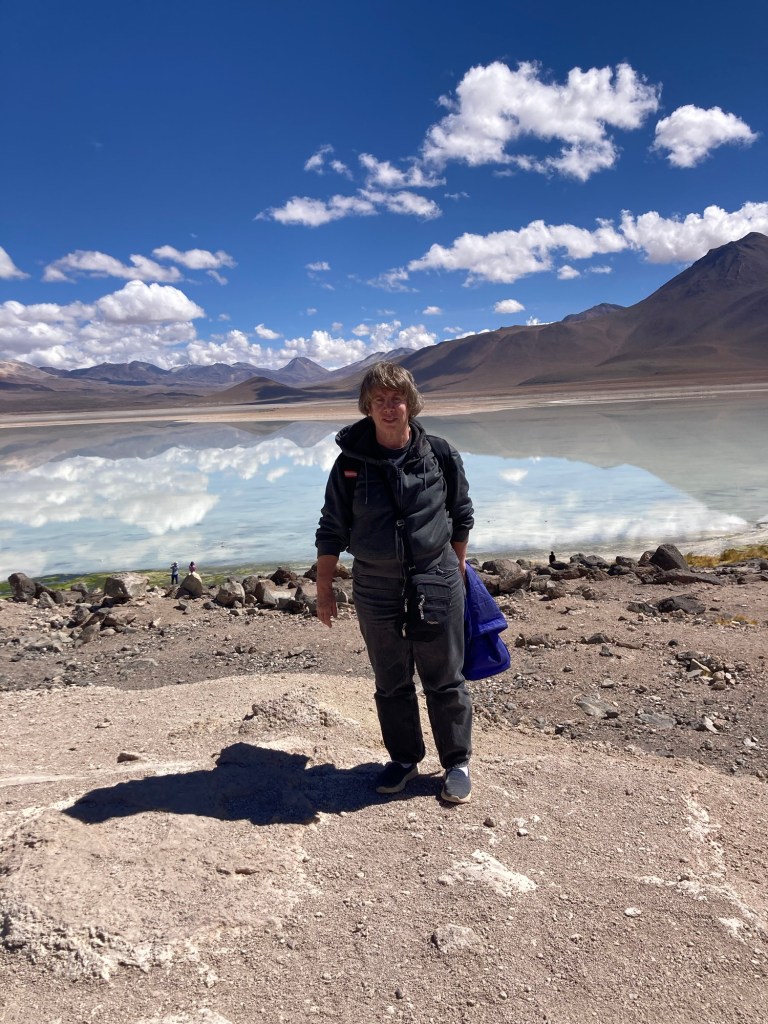
It’s beautiful but at 3500-4000 meters, the altitude can be problematic. I used the anti-altitude pills which prevented headaches but didn’t do a thing for the lack of stamina so I tried to avoid anything strenuous, like walking more than 50 feet.
Since the whole area was formed by volcanoes, geysers and hot springs abound. Our tour stopped at a hot spring and I changed into my bathing suit and melted into the very hot water:
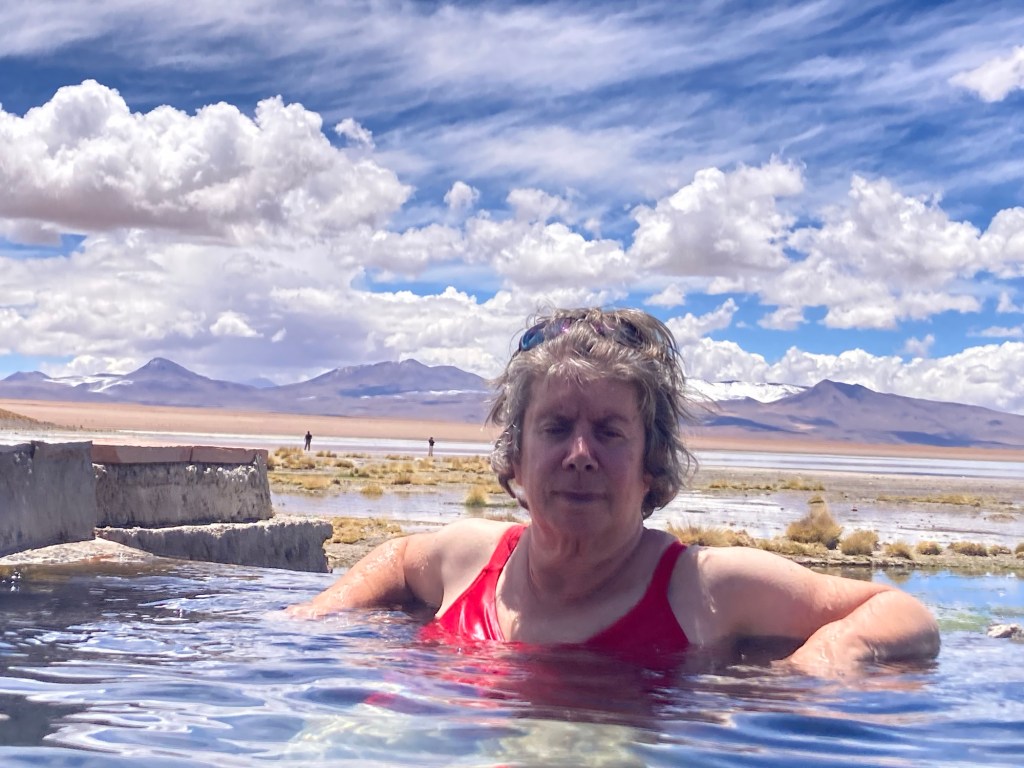
A few more lakes followed and even though we were at the end of the season, hundreds of flamingoes remained:
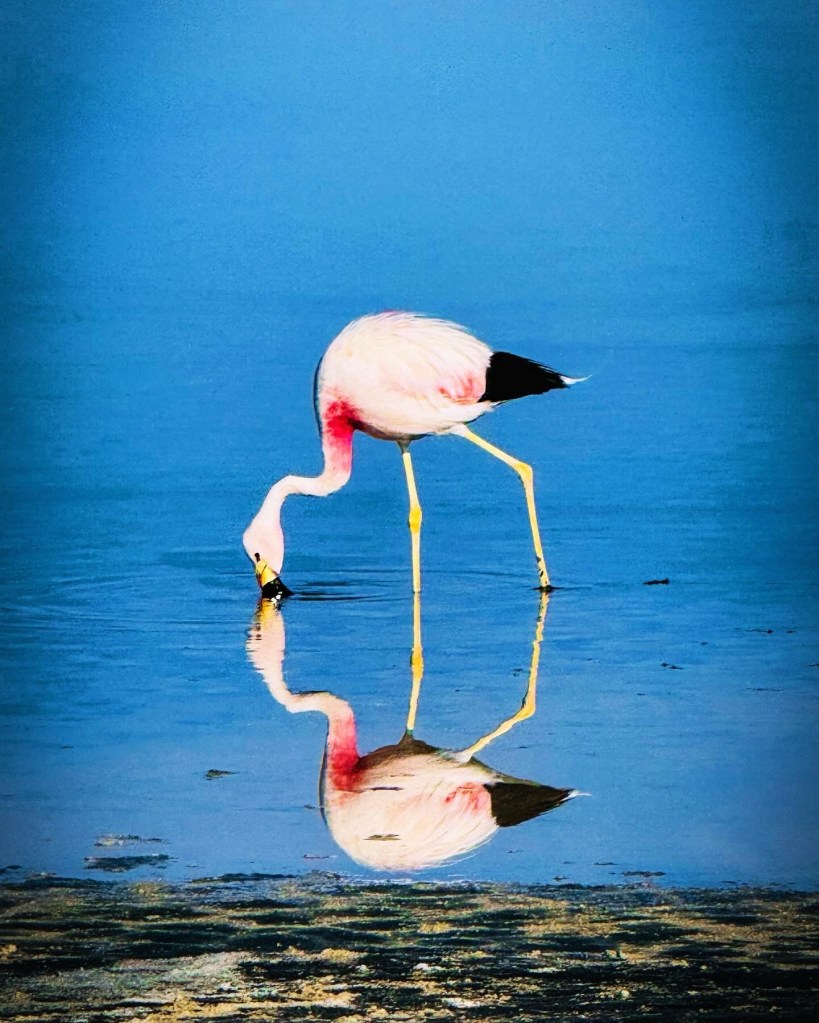
My thanks to my fellow traveller, Eward, for the photo- my camera isn’t that good.
Flamingoes weren’t the only wildlife. Wild vacunas, a relative of the llama, would bounce alongside our vehicle:

Later, llamas appeared, although they were probably not wild given the pink bows in their wool:
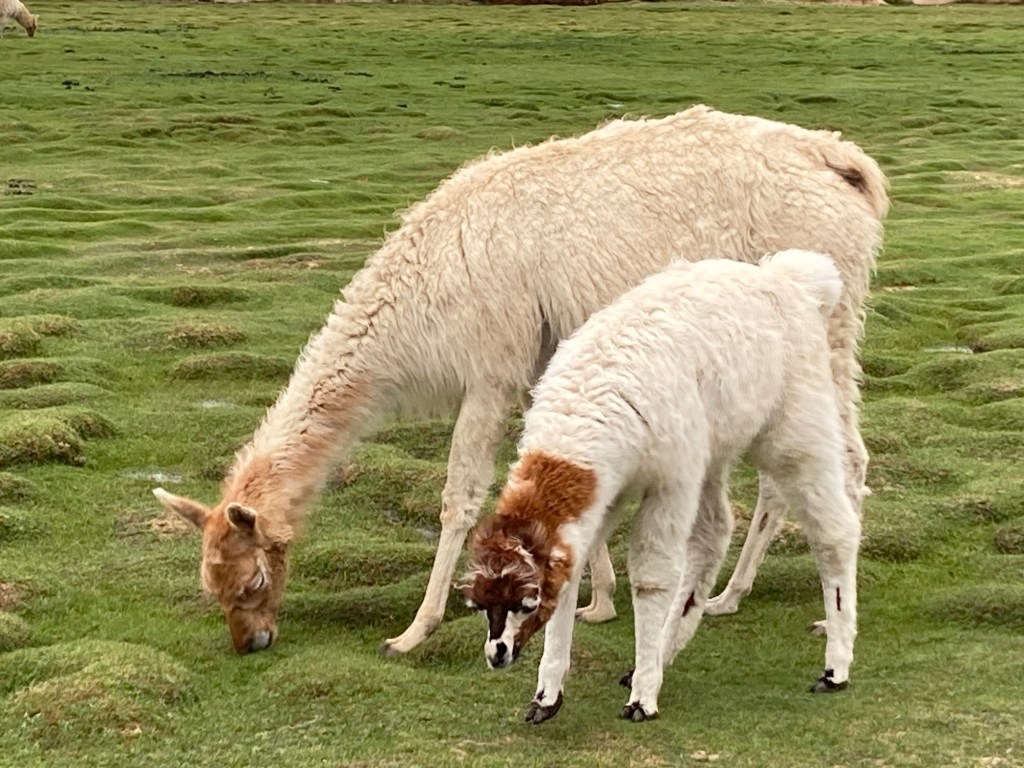
After a number of spectacular lakes and lots of vicuñas and llamas, the landscape turned to desert with interesting rock formations, created after centuries of winds eroded the rocks. My favourite was one called the broken heart:
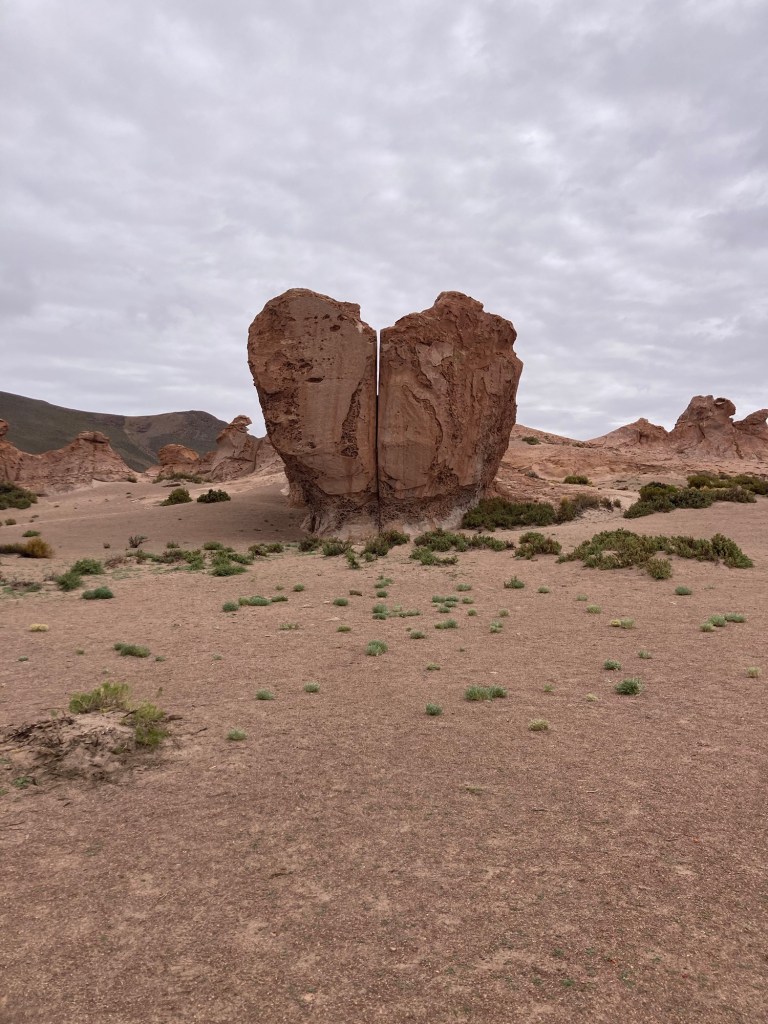
The highlight of the tour began the next day with a 4:00am wake-up and an hour drive to see the sunrise over the salt flats:

The Uyuni salt flats are the largest in the world, nearly 11,000 square kilometres of salt. I was there in the rainy season, so a small layer of water covered the salt, creating an interesting phenomenon sovthat discerning where the salt and water ended and the sky began was impossible:

Again thanks to Eward and his drone for the photograph.
Eventually we made our way to a dry spot, where we could enjoy the salt flats at its salty best:

A few hours later we drove to the town of Uyuni where we stopped at the train cemetery, a collection of rusty, dilapidated locomotives and other train carriages:
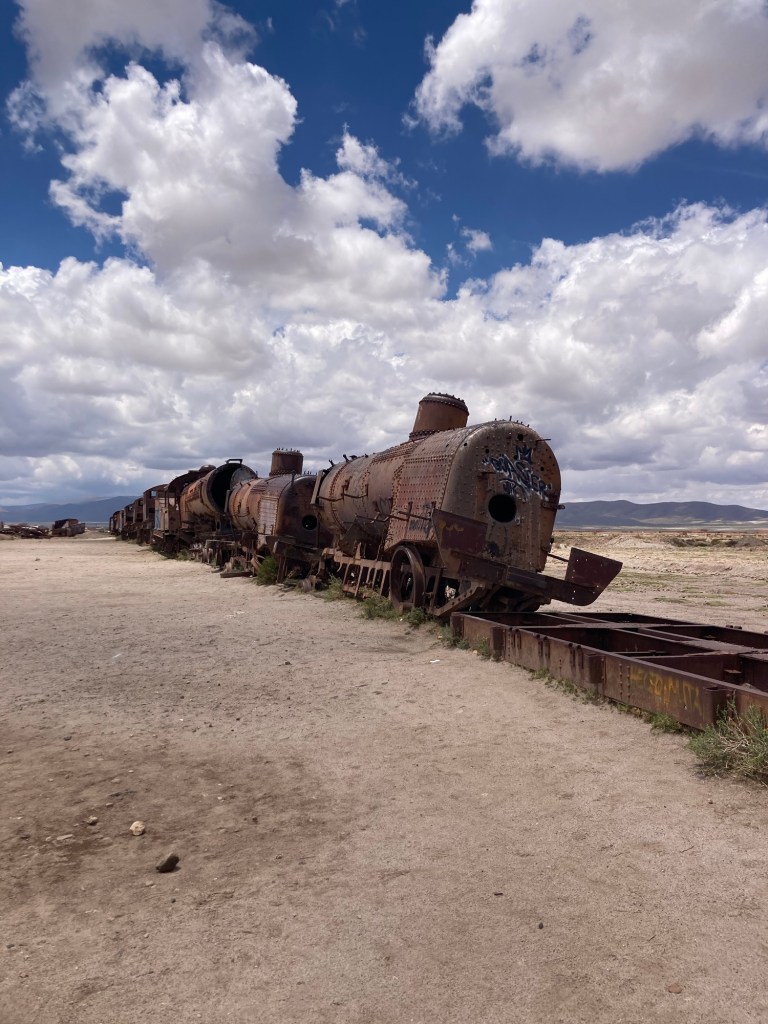
For a train fanatic, the ability to climb all over these decrepit beasts was quite wonderful.
Our return to San Pedro de Atacama, Chile took about 10 hours on the same bumpy road we had previously taken, coupled with another 4 hours at the Bolivian/Chilean border. But we all made it in one piece so I guess I shouldn’t complain.
A few days later, I flew into La Paz, Bolivia’s largest city and the highest city, at 3600 meters, in the world.
My walking tour started at the San Pedro prison, which became notorious some years back for its tours. Prisoners are required to pay their rent, and for some prisoners, it’s a bargain spot in central La Paz so they bring their families to live with them. In the more luxurious ( and higher rent) area, there are ensuites and jacuzzis. While some guards patrol the perimeter, the prisoners inside rule the place, with biannual elections etc. As security to get in and out was pretty lax, some enterprising prisoners started offering tours to curious tourists. Things went well for a number of years until authorities realized the tourists were frequently coming in to buy cocaine.

The tours officially stopped but unofficial ones still continue. The problem is visitors are requested to give their passports to the guards as they enter and stories abound of the need to pay excessive bribes to get them back and leave. Needless to say, I didn’t try and visit.
But I did go to the witches’ market, so named for all the potions, amulets and other weird items for sale. The oddest, to my mind, are the llama infants and fetuses. Traditionally, they are buried for good luck at building sites; the bigger the building, the larger the offering should be:

Again, needless to say, I didn’t buy any dead llamas.
The walking tour continued, passing what I was starting to recognize as standard buildings in former Spanish towns: a Roman Catholic Cathedral, a National Congress, the Presidential Palace complete with a gruesome tale of a past president who was dragged out by an angry mob and hanged, the police station and the Justice building.
When my tour ended, I partook in what I consider to be one of the most interesting developments in La Paz: the proliferation of cable cars as a means of transport. La Paz is basically built in the bowels of a valley, with the center at the bottom and the residential buildings constructed on the slopes with wealth defined by how high up on the hills one’s house is. The roads are narrow and jammed with traffic. In 2010, cable cars were erected to provide alternatives to vehicles and by most accounts, have been well received.

Ten different cable car lines connect much of the city. They are cheap, clean and efficient- it took me less than 10 minutes to get to the city center from my hotel for about $.40 but a cab ride would have cost $10 and taken 45 minutes. I spent a few hours riding different lines and seeing the city from different cable cars. It was a great way to see the city.
And so ends my 2024 South American journey.

